PEOPLES TEMPLE TIMELINE
1931 (May 13): James (Jim) Warren Jones was born in Crete, Indiana.
1949 (June 12): Marceline Mae Baldwin married James (Jim) Warren Jones.
1954: Jim and Marceline Jones founded Community Unity Church in Indianapolis, Indiana.
1956: Peoples Temple, the renamed Wings of Deliverance (first incorporated 1955), opened in Indianapolis.
1960: People Temple officially became a member of The Disciples of Christ (Christian Church) denomination.
1962: Jim Jones and family lived in Brazil.
1965 (July): Jones, his family, and 140 members of his interracial congregation moved to Redwood Valley, California.
1972: Peoples Temple purchased church buildings in Los Angeles (September) and San Francisco (December).
1974 (Summer): Peoples Temple pioneers began clearing land in the Northwest District of Guyana, South America to develop the Peoples Temple Agricultural Project.
1975 (December): Al and Jeannie Mills, Peoples Temple apostates, founded the Human Freedom Center.
1976 (February): Peoples Temple signed a lease with the Government of Guyana “to cultivate and beneficially occupy at least one-fifth” of 3,852 acres located in the Northwest District of Guyana.
1977 (Summer): Approximately 600 Peoples Temple members moved to Jonestown in a three-month period.
1977 (August): New West Magazine published an exposé of life inside Peoples Temple based upon apostate accounts.
1977 (Summer): Tim Stoen founded the “Concerned Relatives,” an activist group of apostates and family members that urged government agencies and media outlets to investigate Peoples Temple.
1977 (September): A “six-day-siege” staged by Jim Jones occurred in Jonestown in which residents believe they are under attack.
1978 (November 17): California Congressman Leo J. Ryan, members of the Concerned Relatives, and members of the media visited Jonestown.
1978 (November 18): Ryan, three journalists (Robert Brown, Don Harris, and Greg Robinson) and one Peoples Temple member (Patricia Parks) were killed in an ambush of gunfire at the Port Kaituma airstrip, six miles from Jonestown. After the assault at the airstrip more than 900 residents, following the orders of Jones, ingested poison in the Jonestown pavilion. Jones died of a gunshot wound to the head.
1979 (March): The Guyana Emergency Relief Committee obtained funding to transport more than 400 unidentified and unclaimed bodies from Dover, Delaware to be interred at Evergreen Cemetery in Oakland, California. A small monument was erected.
2011 (May 29): A dedication service occurred observing the installation of four memorial plaques at Evergreen Cemetery listing the names of all who died in Jonestown.
2018 (November 18): A memorial service marked the renovation of the burial site, along with the installation of a small monument noting the 2011 dedication.
FOUNDER/GROUP HISTORY

James Warren Jones [Image at right] was born May 13, 1931 to a working class family at the height of the Great Depression in Crete, Indiana (Hall 1987:4). His father, James Thurman Jones, was a disabled veteran, while his mother, Lynetta Putnam Jones, was the principal breadwinner and responsible parent in the family. She greatly influenced her son’s interests in social justice and equality. She was skeptical of organized religion, but did believe in spirits—a belief she communicated to her son (Hall 1987:6). A neighbor took him to Pentecostal church services as a child, and this undoubtedly shaped his understanding of worship as an intensely emotional experience. What emerged from these influences was a self-styled theology that combined aspects of Pentecostalism with social idealism. Jones met Marceline Baldwin in Richmond, Indiana, and the 18-year-old Jones married the 22-year-old on June 12, 1949. The couple moved to Indianapolis in 1951 to attend school.
By 1954, Jones had established his own church, called Community Unity, in Indianapolis (Moore 2009:12). That same year, he preached as a guest minister at the Laurel Street Tabernacle in Indianapolis, Indiana, an Assemblies of God church within the Pentecostal tradition (Hall 1987:42). While the church administrative board lamented Jones’ inclusion of African Americans from his Community Unity Church, his charismatic style attracted a number of working class white members away from the Laurel Street congregation. Jim and Marceline incorporated the Wings of Deliverance on April 4, 1955; a year later, they re-incorporated, moved, and renamed their organization Peoples Temple (Hall 1987:43). By 1957 the Peoples Temple Apostolic Church had gained a reputation in Indianapolis for practicing a social gospel ministry. The congregation voted in 1959 to 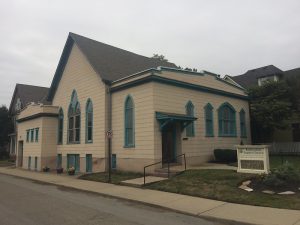 affiliate with the Disciples of Christ (Christian Church), and in 1960 the Peoples Temple Christian Church Full Gospel [Image at right] became an official member of the denomination (Moore 2009:13).
affiliate with the Disciples of Christ (Christian Church), and in 1960 the Peoples Temple Christian Church Full Gospel [Image at right] became an official member of the denomination (Moore 2009:13).
Throughout the 1950s, Jim and Marceline visited Father Divine’s Peace Mission in Philadelphia. Jones was impressed with Father Divine’s interracial vision, his charismatic abilities, and his successful business cooperatives. He also adopted Divine’s practice of having parishioners call him “Father,” and calling Marceline “Mother.” After Father Divine died, Jones attempted to take over the Peace Mission, but Mother Divine rejected his advances. Nevertheless, a number of elderly African American members were attracted to the Temple’s message and moved westward (Moore 2009:16-17).
Jones’ commitment to racial equality led him briefly to chair the Indianapolis Human Rights Commission in 1961. But a vision of nuclear holocaust, coupled with an article in the January 1962 issue of Esquire Magazine identifying the safest places in case of nuclear attack, prompted him to take his family to Belo Horizonte, Brazil, one of the places listed. The Temple continued in Indianapolis without Jones, but faltered without his leadership. Upon his return in 1965, he persuaded about 140 people, half of them African Americans and half Caucasians, to move to Redwood Valley in the California wine country, another safe venue identified by Esquire (Hall 1987:62). There they constructed a new church building and several administrative offices, and began operating a number of care homes for senior citizens and mentally challenged youth.
The progressive political scene in California was yet another reason for Jones’ move west (Harris and Waterman 2004). In Redwood Valley Jones began to recruit young, college-educated whites to complement the large number of working class families who already belonged to Peoples Temple. This cadre of relatively affluent members—most of whom had developed a commitment to peace and justice as part of the Civil Rights movement and anti-Vietnam War protests—assisted poorer members in navigating the social welfare system. They provided a number of services that enabled the poor to receive the benefits to which they were entitled, especially senior citizens who had trouble collecting the Social Security payments they had earned. When the Temple opened a church in the Fillmore District of San Francisco, it attracted thousands of African Americans as well as city officials and political figures. In the heart of the ghetto, the group offered free blood pressure testing for senior citizens, free sickle-cell anemia testing for African Americans, and free child care for working parents. It also hosted a variety of progressive political speakers, from Angela Davis to Dennis Banks.
Hundreds of Temple members lived communally in Redwood Valley, San Francisco, and, less so, in Los Angeles. Older members signed life-care contracts, contributing their Social Security checks in return for room and board, health care, and the goods and services needed for their retirement. In Redwood Valley, Temple members established and operated several care homes for the elderly, the mentally ill, and the mentally challenged, and these enterprises raised money for the group. Those who “went communal,” as Temple members describe it, donated their paychecks to the group and received minimal life support: cramped quarters, a small allowance for necessities, communal meals. Traditional fundraising appeals through mass mailings supported some of the Temple’s many social programs (Levi 1982:xii). A Planning Commission, comprised of about 100 Temple leaders, discussed major organizational decisions, with Jones retaining final decision-making authority.
In 1974, the Temple leadership negotiated with the South American nation of Guyana to develop nearly 4,000 acres in the Northwest District of the country on the 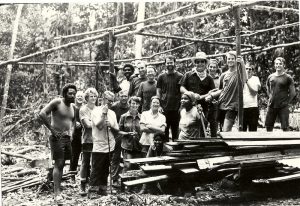 Venezuelan border. By the time the Temple signed an official lease for the land in 1976, pioneers from the group had already spent two years of back-breaking labor [Image at right] to clear jungle in Guyana in order to establish what they called the Peoples Temple Agricultural Project. Guyana, a multiracial state and the only English-speaking country in South America, declared itself to be a cooperative socialist republic. Its black minority government welcomed the prospect of serving as a refuge for Americans fleeing a racist and oppressive society. Moreover, having a large group of ex-patriate Americans so close to the border with Venezuela assured U.S. interest in the area under dispute (Moore 2009:42). The Peoples Temple Agricultural Project grew slowly at first, housing only about 50 people as late as the first months of 1977, but it expanded to more than 400 residents by April, and to 1,000 by the end of the year (Moore 2009:44).
Venezuelan border. By the time the Temple signed an official lease for the land in 1976, pioneers from the group had already spent two years of back-breaking labor [Image at right] to clear jungle in Guyana in order to establish what they called the Peoples Temple Agricultural Project. Guyana, a multiracial state and the only English-speaking country in South America, declared itself to be a cooperative socialist republic. Its black minority government welcomed the prospect of serving as a refuge for Americans fleeing a racist and oppressive society. Moreover, having a large group of ex-patriate Americans so close to the border with Venezuela assured U.S. interest in the area under dispute (Moore 2009:42). The Peoples Temple Agricultural Project grew slowly at first, housing only about 50 people as late as the first months of 1977, but it expanded to more than 400 residents by April, and to 1,000 by the end of the year (Moore 2009:44).
Various pressures led to the relatively speedy immigration from California to Guyana. One impetus was the U.S. Internal Revenue Service’s examination of the Temple’s business-related income. This threatened the church’s tax-exempt status, and raised the potential of shutting down the organization (Hall 1987:197-98). Another incentive derived from the activities of a group of disaffected former members and relatives of current members of Peoples Temple. Known as The Concerned Relatives, the group lobbied various government agencies to investigate the Temple, alleging a number of abuses as well as criminal activity. The Concerned Relatives also brought these same allegations to news media outlets. A highly critical article published in New West Magazine featuring criticism from former members who publicly blasted the Temple and its leadership, was apparently the precipitating factor to drive Jones immediately to Guyana, which he never left (Moore 2009:38-39).
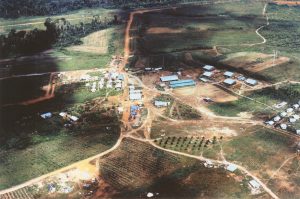
At some point in 1977, the agricultural project became known as Jonestown. [Image at right] Conditions were difficult, but hope was high for life in the “Promised Land,” as Temple members back in the U.S. called it. The work needed to maintain a community of a thousand souls was immense. Members worked in agriculture, construction, maintenance (such as cooking and laundry), childcare for the 304 minors under the age of 18 living there, education, healthcare, and fundraising (making items to sell in Georgetown, which was not easily accessible from Jonestown). Everyone contributed to the community, at times working eleven hours a day, six days a week. Evenings were filled with meetings, educational programs, Russian language lessons (for what people believed was an imminent move to the Soviet Union) and other duties. Residents lived in dormitories, and frequently children were raised apart from their biological parents.
At first the diet was adequate, but as more people arrived, portions became relatively smaller, consisting mainly of beans and rice, with meat or green vegetables reserved for meals when outsiders visited the community. When people such as U.S. Embassy officials, Guyana government representatives, and supportive family members and friends did visit, residents of Jonestown received lengthy briefings to ensure that the image portrayed of Jonestown was positive and convincing.
Although the Temple boasted 20,000 members, it is more likely that California membership peaked at 5,000, with regular attendees totaling between 2,000 and 3,000 (Moore 2009:58). A number of those who left over the years had been members of the upper echelon of Temple leadership, including those responsible for key decision-making, financial and legal planning, and oversight of the organization. They became apostates, that is, public opponents of Peoples Temple (as distinct from individuals who simply abandoned the organization). Among these “defectors” was Tim Stoen, the Temple attorney and Jim Jones’ right-hand man. Stoen gave the fledgling Concerned Relatives group both its star power and organizational acumen, and was key to the success of a public relations campaign designed both to rescue relatives living in Jonestown, and to bring down Jim Jones and Peoples Temple. The Concerned Relatives alleged that Jonestown operated as a concentration camp, and claimed that Jones brainwashed individuals who went to Guyana and held them there against their will (Moore 2009:64-65; see their “Accusation of Human Rights Violations“ published 11 April 1978).
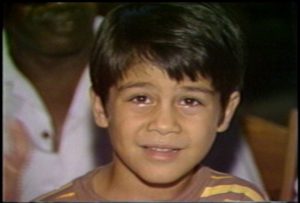
The poster child for the Concerned Relatives (and, coincidentally, for Peoples Temple) was a young boy named John Victor Stoen, [Image at right] the son of Grace Stoen, another apostate. Although Tim Stoen was the putative father, he had signed an affidavit which said that he had encouraged a sexual encounter between his wife and Jim Jones, and that John Victor had been the product of that liaison (Moore 2009:60-61). Tim and Grace joined forces to fight for custody of the boy, and Jones’ vow to hold onto John Victor, even unto death, galvanized the two factions.
As the Stoen custody battled festered, former Temple members Deborah Layton and Yolanda Crawford defected from Jonestown and signed affidavits detailing what they experienced while living there. Family members began contacting the State Department, which in turn directed U.S. Embassy officials in Guyana to visit Jonestown and check on various relatives. In addition to being a party to the John Victor custody case, Tim Stoen filed a number of nuisance lawsuits against the Temple in order to recover money and property for other former members.
The pressure exerted by the Concerned Relatives served to demoralize Jones and the people in Jonestown, and it is clear that Jones’ health and leadership deteriorated significantly. As a result, a leadership corps comprised principally of women ran day-to-day operations in the community (Maaga 1998). At times, Jones became incapacitated through using prescription drugs such as Phenobarbital (Moore 2009:74-75). He would fly into rages, only to calm down moments later. He also had trouble speaking at times, although he also would ramble on for hours well into the night on the community’s public address system, reading news reports from Soviet and Eastern Bloc sources, which presented anti-capitalist and anti-imperialist perspectives highly critical of America. He frequently “portrayed the United States as beset by racial and economic problems” that his followers had escaped by coming to Jonestown (Hall 1987:237). As a result of their long hours in the fields during the day, and their nights punctuated by meetings and harangues over the P.A. system, Jonestown residents became increasingly exhausted and sleep-deprived.
The Concerned Relatives’ letter-writing campaigns to members of Congress finally paid off, and they found an ally in California 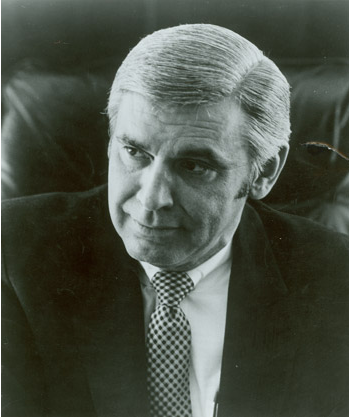 Congressman Leo J. Ryan. [Image at right] A constituent, Sammy Houston, claimed that his son Robert had been murdered by Temple members. (There is no evidence to substantiate his claim, which was investigated by the police at the time of Robert’s death, and was re-examined after events in Jonestown.)
Congressman Leo J. Ryan. [Image at right] A constituent, Sammy Houston, claimed that his son Robert had been murdered by Temple members. (There is no evidence to substantiate his claim, which was investigated by the police at the time of Robert’s death, and was re-examined after events in Jonestown.)
Ryan announced his plans to travel to Jonestown in November 1978. The congressman claimed he was conducting a neutral fact-finding mission, but the people of Jonestown did not see it this way. No other members of Congress accompanied Ryan to Guyana, but several members of the Concerned Relatives, along with news reporters who had written critical articles about the Temple did. The party left for Guyana on November 14, 1978 and spent two days in Georgetown, Guyana’s capital (Moore 2009:91). After lengthy negotiations with Jonestown leadership, Ryan, several of the Concerned Relatives, and most of the journalists were allowed to enter the community on November 17 to interview residents, as well as to seek out people allegedly being held against their will. Jones told Ryan that anyone who wished to leave Jonestown was welcome to do so. The day ended with a rousing performance by the Jonestown Express, the community’s band, and with Ryan announcing that Jonestown looked like it was the best thing that had happened to many people. The crowd cheered. That night, however, a disaffected resident slipped a note to both the U.S. Embassy Deputy Chief of Mission and to an NBC News reporter who were present. The note asked for help to get out of Jonestown (Stephenson 2005:118-19).
Ryan and his entourage continued to interview Jonestown residents the next day, but the upbeat mood of the night before had dissipated. As the day progressed, sixteen residents—including members of two long-time Temple families—asked to leave with the Ryan party. The congressman gathered his group together amid considerable strife. As Ryan attempted to leave Jonestown, a resident named Don Sly, the former husband of a Concerned Relative, attacked Ryan with a knife, inflicting superficial cuts on himself but not the congressman (Moore 2009:94). The congressional party made its way in a truck to the airstrip, located six miles from Jonestown in Port Kaituma, the nearest settlement. As they began to board two small planes to take them to Georgetown, a handful of Jonestown residents who had followed the congressman and his party to the airstrip opened fire. Killed in the ambush were Congressman Leo Ryan, three journalists—Robert Brown, Don Harris, and Greg Robinson—and one Peoples Temple member—Patricia Parks, who had wished to leave Jonestown. A dozen members of the media, defecting members, and staff from Ryan’s office were seriously wounded. Two defectors were shot by Larry Layton, who had posed as a defector, and was already aboard one plane when the shooting began outside (Stephenson 2005:120-27).
Back in Jonestown, the residents congregated in the central pavilion. The mood was grim after the defections. Jones proclaimed that the end had come for the people of Jonestown. He said the outside world had forced them to this extreme situation, and that “revolutionary suicide” was their only option. One resident, Christine Miller, dissented, and asked about going to Russia, saying she thought the children should have a chance to live. Other residents shouted her down, however, and the deaths began (Moore 2009:95-96). Parents were the first to give the drink to infants and children; many mothers poured the poison down their children’s throats before they took the poison themselves (Hall 1987:285). Adults then took the poison from a large vat of purple Flav-R-Aid, a British version of Kool-Aid, mixed with potassium cyanide and a variety of sedatives and tranquilizers (including Valium, Penegram, and chloral hydrate) (Hall 1987:282). Some were injected, some drank from a cup, and some had it squirted into their mouths. Although armed guards stood by to prevent anyone from leaving, in the end they also took the poison. Jones, however, died of a gunshot wound to the head: an autopsy could not determine whether his death had been murder or suicide. Despite early reports to the contrary, only one other person died of a gunshot wound, Annie Moore. Sharon Amos, living in the Temple’s house at Lamaha Gardens, in Georgetown, received the order from Jonestown to commit suicide. She killed 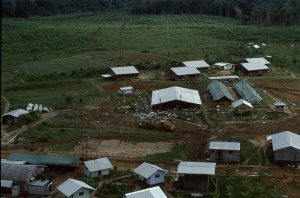 her three children and herself in the bathroom of the Georgetown headquarters. The final death toll in Guyana that day was 918: 909 in Jonestown; five at the Port Kaituma airstrip, and four at the Temple’s house in Georgetown. [Image at right]
her three children and herself in the bathroom of the Georgetown headquarters. The final death toll in Guyana that day was 918: 909 in Jonestown; five at the Port Kaituma airstrip, and four at the Temple’s house in Georgetown. [Image at right]
There were about one hundred survivors. Two families and some young adults left early on the morning of the 18th and hiked up the railroad tracks that led to the community of Matthews Ridge, thirty miles away from Jonestown. Three young men were sent out of the area with suitcases full of cash destined for the Soviet Embassy. Two other young men fled as the deaths were occurring, and two elderly people hid in plain sight. Another half dozen were on procurement missions in Venezuela and on boats in the Caribbean. Finally, about eighty Temple members who had been staying in Lamaha Gardens (including members of the Jonestown basketball team) escaped the deaths by virtue of being 150 miles away.
The government of Guyana denied the request of the U.S. State Department to bury 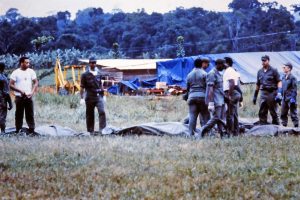 the bodies in Jonestown. A U.S. Army Graves Registration team bagged the remains, which the U.S. Air Force then transported to Dover Air Force Base for identification by the Federal Bureau of Investigation. [Image at right] (Interviews with participants in the bodylift are available at “Military Response to Jonestown” 2020). Routine embalming of all bodies began almost immediately, but one result was that vital forensic evidence was destroyed, which prevented accurate determination of death for seven individuals autopsied by the Armed Forces Institute of Pathology. Relatives claimed approximately one half of the number of bodies, while about 400 bodies remained unidentified or unclaimed. The majority of the unidentified were children. An interfaith group in San Francisco found a cemetery in Oakland, California willing to bury these bodies, after facing rejection by a number of other cemeteries afraid of criticism. In May, 2011 four memorial plaques were placed at the burial site in Evergreen Cemetery, listing the names of all those who died on November 18, 1978.
the bodies in Jonestown. A U.S. Army Graves Registration team bagged the remains, which the U.S. Air Force then transported to Dover Air Force Base for identification by the Federal Bureau of Investigation. [Image at right] (Interviews with participants in the bodylift are available at “Military Response to Jonestown” 2020). Routine embalming of all bodies began almost immediately, but one result was that vital forensic evidence was destroyed, which prevented accurate determination of death for seven individuals autopsied by the Armed Forces Institute of Pathology. Relatives claimed approximately one half of the number of bodies, while about 400 bodies remained unidentified or unclaimed. The majority of the unidentified were children. An interfaith group in San Francisco found a cemetery in Oakland, California willing to bury these bodies, after facing rejection by a number of other cemeteries afraid of criticism. In May, 2011 four memorial plaques were placed at the burial site in Evergreen Cemetery, listing the names of all those who died on November 18, 1978.
Temple lawyers in San Francisco filed for bankruptcy of the corporation in December 1978, and the San Francisco Superior Court agreed to the dissolution the next month. Judge Ira Brown appointed Robert Fabian to serve as Receiver of the assets, and the local attorney was able to track down more than $8.5 million in banks around the world, in addition to assets traced to San Francisco. Judge Brown ordered all claimants against the Temple to petition the court within four months: 709 claims were made (Moore 1985:344). In May 1980, Fabian proposed a plan to settle the $1.8 billion in claims against the group, by issuing “Receiver’s Certificates” for prorated shares of Temple funds to 403 plaintiffs who had filed wrongful death claims (Moore 1985:351). In November, 1983, a few days before the fifth anniversary of the deaths, Judge Brown signed the order which formally terminated Peoples Temple as a nonprofit corporation. The court had paid out more than $13 million (Moore 1985:354-55).
DOCTRINES/BELIEFS
The belief system of Peoples Temple combined a number of different religious and social ideas, including Pentecostalism, the Christian Social Gospel, socialism, communism, and utopianism. The charisma of Jim Jones and the idealism of Temple members who believed that their vision would create a better world held together this wide-ranging mix of beliefs and practices. Hall calls Peoples Temple an “apocalyptic sect,” which expected the imminent end of the capitalistic world (Hall 1987:40). Wessinger classifies Peoples Temple as a catastrophic millennial group, characterized by a radical dualism that pitted the “Babylon” of the United States against the New Eden of Jonestown (Wessinger 2000:39). All of these views describe the Temple in part.
Jones initially practiced a lively form of Christianity borrowed largely from Pentecostalism. He relied upon the prophetic texts of the Bible to exhort his congregation to work for social justice. An analysis of audiotaped worship services from Peoples Temple in Indiana and California indicates Jones’ debt to Black Church traditions (Harrison 2004). Services followed a free-form style in which music played a key role, the organ emphasizing Jones’ call-and-response style of preaching. His sermons bore themes important to the Black Church: liberation, freedom, justice, and judgment.
The theology of the Temple changed, however, as the role and person of Jim Jones became more exalted. Chidester argues that a coherent theology emerges from Jones’ sermons (Chidester 1988:52). In this theology, Jones asserted that the “Sky God” of 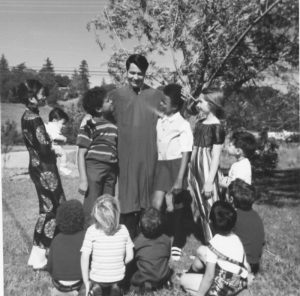 traditional Christianity did not exist, but a genuine God, referred to as Principle or Divine Socialism, did exist in the person of Jim Jones. [Image at right] If God is Love, and Love is Socialism, then humans must live socialistically to participate in God. Moreover, this allowed for personal deification, as Jones quoted John 10:34: “ye all are gods” (Chidester 1988:53). Thus, members of Peoples Temple practiced what they called “apostolic socialism,” that is, the socialism of the early Christian community described in Acts 2:45 and 4:34-35. “No one can privately own the land. No one can privately own the air. It must be held in common. So then, that is love, that is God, Socialism” (Chidester 1988:57, quoting Jones on Tape Q 967).
traditional Christianity did not exist, but a genuine God, referred to as Principle or Divine Socialism, did exist in the person of Jim Jones. [Image at right] If God is Love, and Love is Socialism, then humans must live socialistically to participate in God. Moreover, this allowed for personal deification, as Jones quoted John 10:34: “ye all are gods” (Chidester 1988:53). Thus, members of Peoples Temple practiced what they called “apostolic socialism,” that is, the socialism of the early Christian community described in Acts 2:45 and 4:34-35. “No one can privately own the land. No one can privately own the air. It must be held in common. So then, that is love, that is God, Socialism” (Chidester 1988:57, quoting Jones on Tape Q 967).
As Jones felt more secure in his California base, he exchanged religious rhetoric for political rhetoric more and more. He denounced traditional Christianity and excoriated the Bible, which he referred to as the “Black Book” that had enslaved so many of their forebears. In the early 1970s, he published a twenty-four page booklet titled “The Letter Killeth,” in which he listed all of the contradictions and atrocities contained in the Old and New Testaments. Once the group moved to Guyana, Jones dropped all religious references, except when visitors came (Moore 2009:55). No worship services were conducted in Jonestown. Community planning meetings, news readings, and public events replaced worship. It seems likely, though, that older members retained traditional Christian beliefs (Sawyer 2004).
Although Jones claimed to be a communist, the Communist Party USA had no records of his membership, and disavowed any connection with him after the deaths in Jonestown. Jones made up his communism as he went along, creating an eclectic blend of class consciousness, anti-colonial struggle, selected Marxist ideas, and his perceptions of the community’s needs at the moment. Whatever radical politics he and the group may have shared were somewhat muted, given the fact that they openly supported a variety of Democratic candidates in local, state, and national politics once they relocated to San Francisco. A number of writers have asserted that the Temple helped to elect George Moscone as San Francisco mayor, perhaps even committing fraud to do so, “but the voting clout of actual Temple members in San Francisco seems to have been grossly misperceived” (Hall 1987:166).
Rather than doctrinaire communism, the ideology of Peoples Temple focused on commitment to the community, and to elevating the group above the individual. Members deemed self-sacrifice the highest form of nobility, and selfishness as the lowest of human behavior. In addition, commitment to Jim Jones was required. Loyalty tests ensured commitment to the cause as well as to the leader. No one looked askance at various practices because they made sense within a worldview that anticipated an imminent apocalypse, either through nuclear war or genocide against people of color. By fleeing the United States and attempting to create an alternative society, Temple members believed they might survive this harsh inevitability, perhaps even serving as a new model for humanity. At the same time, though, Jones’ pervasive rhetoric concerning the coming Armageddon undermined any sort of hopeful outlook.
RITUALS/PRACTICES
To promote the shift from the self-centered, elitist individualism promoted by capitalism, Jones encouraged re-training, or indoctrination, in the selfless, populist communalism promoted by socialism through a practice known as “catharsis.” Even in Indianapolis, 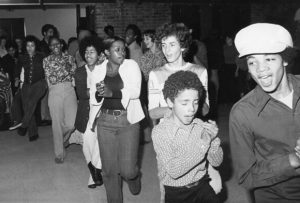 “corrective fellowship” meetings were held in which church members offered self-criticism. But catharsis as a regular part of Temple practice took root in Redwood Valley. [Image at right] Catharsis sessions required public confession and communal punishment for transgressions against the community and its members (Moore 2009:32-33). For example, if a teenager was accused of being rude to a senior citizen, the congregation would hear the evidence and vote on the teenager’s innocence or guilt, and on the punishment to be received. The penalty could be a severe spanking administered by one of the seniors. When Jones introduced the “Board of Education,” a one-by-four inch board two and a half feet long, he assigned a large woman to administer the beatings: “She was strong and knew how to whip hard,” according to Mills (1979). Adults who transgressed were punished by being forced to box with other Temple members. A diary kept by Temple member Edith Roller, for example, reported a boxing match between a young man accused of sexism, and a young woman. The woman knocked out the man, to the delight of the crowd in attendance (Moore 2009:32-33).
“corrective fellowship” meetings were held in which church members offered self-criticism. But catharsis as a regular part of Temple practice took root in Redwood Valley. [Image at right] Catharsis sessions required public confession and communal punishment for transgressions against the community and its members (Moore 2009:32-33). For example, if a teenager was accused of being rude to a senior citizen, the congregation would hear the evidence and vote on the teenager’s innocence or guilt, and on the punishment to be received. The penalty could be a severe spanking administered by one of the seniors. When Jones introduced the “Board of Education,” a one-by-four inch board two and a half feet long, he assigned a large woman to administer the beatings: “She was strong and knew how to whip hard,” according to Mills (1979). Adults who transgressed were punished by being forced to box with other Temple members. A diary kept by Temple member Edith Roller, for example, reported a boxing match between a young man accused of sexism, and a young woman. The woman knocked out the man, to the delight of the crowd in attendance (Moore 2009:32-33).
Transgressions revealed in catharsis ranged from selfishness, sexism, and discourtesy to drug or alcohol abuse, and petty crimes for which members could be arrested and convicted by law enforcement. Temple members considered catharsis sessions as a way to improve individual behavior without resorting to authorities like the police or public welfare officials. Mills (1979) claims that members said what they thought Jones wanted to hear, though others apparently believed in the efficacy of catharsis to solve personal and family problems (Moore 1986).
While ritualized catharsis sessions seemed to end with the move to Jonestown, self-criticism and collective condemnation of transgressors continued during Peoples Rallies. These meetings transpired quite frequently in the evenings after the work day. Individuals responsible for various departments, such as the health clinic or the livestock, reported on progress and problems. In addition, individuals would be criticized for decisions that went awry and behavior that seemed self-serving. Family members and partners had a special responsibility to chastise their own.
Peoples Rallies faced inward, addressing the conditions existing in Jonestown. White Nights, on the other hand, looked outward, responding to the threats, real and imagined, that beset the community. A White Night, so-named to counter racist stereotypes (blackmail, blacklist, blackball, etc.), was an emergency drill called by Jones to prepare community members to defend themselves again imminent attack. Some precedent for these drills may have been set when Jones faked an attack upon his person in Redwood Valley (Reiterman and Jacobs 1982:201-02). White Nights “signified a severe crisis within Jonestown and the possibility of mass death during, or as a result of, an invasion” (Moore 2009:75). The first one in Jonestown probably occurred in September, 1977, when the lawyer for Tim and Grace Stoen traveled to Guyana to serve court papers upon Jones. Men, women, and children armed themselves with machetes and other farm implements, and stood along the perimeter of the settlement for days, sleeping and eating in shifts. Usually White Nights corresponded to perceived threats, such as when allies in the Guyana government were out of the country. As audiotapes recovered from Jonestown indicate, White Nights usually included discussions of suicide, during which individuals declared their willingness to kill their children, their relatives, and themselves rather than submit to the attackers.
Suicide drills have been conflated with White Nights, but were quite different in that people actually practiced taking what was supposedly poison. These drills, which served as tests of loyalty to the cause, were discussed as early as 1973 when eight young high profile Temple members defected (Mills 1979:231). In 1976 Jones staged a test for members of the Planning Commission, telling them that the wine they had drunk was actually poison to see how they would react (Reiterman and Jacobs 1982:294-96). Piecing together documents from Deborah Layton, Edith Roller, and other accounts, it appears that there were at least six suicide rehearsals in Jonestown in 1978 (Layton 1998; Roller Journal, Alternative Considerations of Jonestown and Peoples Temple). Even when suicide was not being rehearsed, it progressively became part of the general conversation more and more, especially during Peoples Rallies (Moore 2006). Individuals also wrote notes to Jones describing assassination and martyrdom plans, such as blowing up the Pentagon or other buildings in Washington, D.C. (Moore 2009:80). Thus, when they were not re-enacting suicide, Temple members were thinking and talking about it.
ORGANIZATION/LEADERSHIP
The Temple had a pyramidal organizational structure, with Jim Jones and a few select leaders at the very tip; a Planning Commission comprising about 100 members near the top; members who lived communally at the next level; and the general rank and file at the base (Moore 2009:35-36). Individuals close to the base of the pyramid did not experience the same levels of coercion, or commitment, as those who had “gone communal” or were further up the pyramid. Even within the Planning Commission, there were a number of inner circles. These included those who helped Jones to fake miraculous healings; those who arranged questionable property transfers; those who practiced dirty tricks (like going through people’s garbage); and those who carried cash to foreign banks.
Despite the rhetoric of racial equality, race and class distinctions continued to exist. According to Maaga, “It was almost impossible for black persons to make their way into positions of influence in the Temple” (Maaga 1998:65). An interracial group of eight young adults defected in 1973, leaving behind a note excoriating the advancement of unproven new white members over time-tested black members:
You said that the revolutionary focal point at present is in the black people. There is no potential in the
white population, according to you. Yet, where is the black leadership, where is the black staff and black attitude? (“Revolutionaries Letter,” Alternative Considerations of Jonestown).
Although some African Americans held leadership positions in Jonestown, the major decision-making power (including planning for mass suicide) remained with whites.
Jones used sex to control Temple members. He arranged marriages, broke up partnerships, and separated families, all in order to make himself the principal object of people’s sexual desire. Encouraging infidelity to one’s partner, Jones demanded fidelity to himself alone, even from the men and women he forced to have sex with him. At the same time, in an effort to create a new, multi-racial society, Jones promoted bi-racial partnerships and the adoption or birth of bi-racial children. A Relationship Committee run by the Planning Commission was established to approve and monitor partnerships between couples.
Jones also accused everyone of being gay; he frequently proclaimed himself to be the only true heterosexual (Hall 1987:112). Harvey Milk, the first openly-gay San Francisco County Supervisor, frequently visited the Temple and was a strong supporter, especially after he received dozens of condolence messages from members following his partner’s suicide. While embracing Milk’s support, Jones also suggested that homosexuality was a problem that did not exist in a true communist society. The Bellefountaines’ examination of the way gays and lesbians were treated within the Temple reveals a contradictory environment of anti-gay rhetoric coupled with an acceptance of gay relationships (Bellefountaine and Bellefountaine 2011).
ISSUES/CHALLENGES
Given the tragic demise of hundreds of Americans, a number of issues of controversy have arisen. Five major questions seem to recur in popular and scholarly literature: 1) What was the level of violence throughout the course of the Temple’s existence? 2) Was Jonestown a concentration camp? 3) What was the status of Jim Jones’ mental health from earliest childhood until his death? 4) Is it accurate to call the deaths in Jonestown suicide, or was it murder? 5) Did the CIA stage the deaths in Jonestown? Two additional controversies have emerged more recently; 6) the first concerns the debate over whether or not to include Jones’ name on a memorial plaque that listed all those who died on November 18,1978; 7) the other concerns the significance of Jonestown in American life and culture.
1. What was the level of violence in Peoples Temple? It is clear that violence existed inside Peoples Temple at certain moments in its history, ranging from verbal abuse, to corporal punishment, to mental torture, to physical torture. Moore (2011) identified four types of violence that occurred, noting increasingly brutal mistreatment in the final year at Jonestown. The most socially acceptable form of violence consisted of discipline, by which individuals were punished for moral infractions such as lying, stealing, cheating, or social infractions such as smoking or using drugs. The punishment tended to fit the crime: a child who had bitten another, was bitten himself; children who stole cookies from the store were spanked with twenty-five whacks. The next level comprised behavior modification in order to change bourgeois patterns of behavior (racism, sexism, classism, elitism, ageism, and so on). Corporal punishment, such as boxing, or nonviolent penance such as housecleaning or paying fines, tended to be used to deal with these crimes against the group. One of the most extreme forms of behavior modification was the time a pedophilic member was beaten on the penis until it bled (Mills 1979:269).
“While discipline and behavior modification might be considered more or less socially accepted (at least in theory if not in practice), two additional forms of violence existed within the Temple that did not mirror the larger society: behavior control and terror” (Moore 2011:100). Behavior control included separating families, informing on other members (and on one’s own thoughts), regulating sexual activity, and, once in Jonestown, governing all aspects of individual life and thought to the extent possible. Jones inculcated a sense of generalized terror beginning in the 1960s with predictions of nuclear war, and continuing in the 1970s with prophecies of racial genocide, fascist takeover, and terrible torture. Terror became more personal in Jonestown, with people fearing for their lives during White Nights, and with actual incidents of torture, such as punishing a woman by having a snake crawl over her; or, tying two young boys up in the jungle and telling them tigers would get them (Moore 2011:103). Residents believed that enemies were intent upon their destruction, and although this is somewhat true (the Concerned Relatives did indeed intend the annihilation of Jonestown), they were convinced their foes planned kidnappings, torture, and murder. When Leo Ryan announced his visit to Jonestown, the widespread sense of terror only intensified.
2. Was Jonestown a concentration camp? There is broad agreement that conditions in Jonestown, though difficult by middle-class standards, were acceptable, and even agreeable, until late 1977. Reports by U.S. Embassy visitors were generally favorable. U.S. Ambassador Maxwell Krebs described the atmosphere in the small jungle community as “quite relaxed and informal” in 1975. “My impression was of a highly motivated, mainly self-disciplined group, and of an operation which had a good chance of at least initial success” (U.S. Committee on Foreign Affairs 1979:135). By mid-1977, however, an influx of more immigrants than the community could handle created a number of serious problems, especially in the areas of food and housing. Deterioration in living and working conditions, coupled with an intensification in terror, began in 1978, and serious decline occurred in the summer months of that year.
It is true, as the Concerned Relatives charged in their declaration of “Human Rights 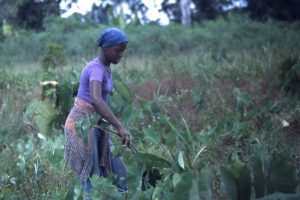 Violations,” that incoming and outgoing mail was censored; that travel was restricted; that family members could not visit relatives in Jonestown; and that residents put their best face forward for visitors. [Image at right] Situated in the middle of dense jungle, with only two villages accessible by road (Port Kaituma six miles away and Matthews Ridge 30 miles distant) and connected only by air or river travel to the rest of the world, Jonestown was an encapsulated community, almost completely isolated from contact with outsiders. At the same time, Jonestown did not acquire its totalistic profile apart from the agitation of its “cultural opponents” (Hall 1995). As Hall observes, anticult activists played a role in the outcomes in Jonestown and at Mt. Carmel. In their article that analyzes the endogenous (internal) factors leading to violence in new religious movements and the exogenous (external) factors, Anthony, Robbins, and Barrie-Anthony (2011) describe a “toxic interdependence” of “anticult and cult violence,” and suggest that “some groups may be so highly totalistic that they are very vulnerable to [a] triggering effect,” that is, acting out totalistic projections from the outside world (2011:82). In other words, conditions in Jonestown may have declined in response to the level of threat residents believed to exist.
Violations,” that incoming and outgoing mail was censored; that travel was restricted; that family members could not visit relatives in Jonestown; and that residents put their best face forward for visitors. [Image at right] Situated in the middle of dense jungle, with only two villages accessible by road (Port Kaituma six miles away and Matthews Ridge 30 miles distant) and connected only by air or river travel to the rest of the world, Jonestown was an encapsulated community, almost completely isolated from contact with outsiders. At the same time, Jonestown did not acquire its totalistic profile apart from the agitation of its “cultural opponents” (Hall 1995). As Hall observes, anticult activists played a role in the outcomes in Jonestown and at Mt. Carmel. In their article that analyzes the endogenous (internal) factors leading to violence in new religious movements and the exogenous (external) factors, Anthony, Robbins, and Barrie-Anthony (2011) describe a “toxic interdependence” of “anticult and cult violence,” and suggest that “some groups may be so highly totalistic that they are very vulnerable to [a] triggering effect,” that is, acting out totalistic projections from the outside world (2011:82). In other words, conditions in Jonestown may have declined in response to the level of threat residents believed to exist.
3. What was the status of Jim Jones’ mental health? The introduction to Rosenbaum’s Explaining Hitler (1998) presents an overview of his analysis of the many attempts to understand how Adolf Hitler came to be who and what he was. The subtitle, The Search for the Origins of His Evil, could equally describe a number of popular and scholarly works about Jim Jones. Rosenbaum’s catalog of explanations (mountebank, true believer, mesmeric occult messiah, scapegoat, criminal, abused child, “Great Man,” and victim, among others) can be and have been applied to Jones. Accounts range from Jones being crazy and evil from his youth (Reiterman and Jacobs 1982, Scheeres 2011); that his “herculean conscience” to do good ultimately overwhelmed him (Rose 1979); that “audience corruption” deluded him into believing his own rhetoric (Smith 2004); and other evaluations.
It is clear that Jones was charismatic, manipulative, sensitive, and egocentric. Not as clear is the extent of his abilities as a faith healer. One thing that many Jonestown survivors and former Temple members agree on is that Jones had paranormal abilities. Although sham faith healings occurred in the San Francisco Temple, even some critics of those healings admit that on occasion the healings were genuine (compare Beck 2005 and Cartmell 2006).
Equally clear is that Jones began using barbiturates in San Francisco, and possibly earlier, to manage his schedule. His long-term drug abuse became apparent in Jonestown. U.S. Embassy officials visiting 7 November 1978 noted that his speech was “markedly slurred” and that he seemed mentally impaired (U.S. Committee on Foreign Affairs 1979:143). Audiotapes made in Jonestown confirm Jones’ mental and speech deficiencies. His autopsy revealed toxic levels of pentobarbital in his liver and kidneys, thus indicating a drug addiction (“Autopsies” 1979).
4. Were the deaths in Jonestown suicide or murder? The question of whether or not residents of Jonestown voluntarily committed suicide, or whether they were coerced, and therefore murdered, continues in lively online debates (“Was It Murder or Suicide?” 2006). Evidence from the audiotape made 18 November (Q 042) as well as eyewitness accounts indicate that parents killed their children; even if youngsters voluntarily drank the poison, the 304 children and minors under age eighteen are considered murder victims. Some senior citizens were found dead in their beds, evidently injected, and these individuals were also murdered. Debate centers on the able-bodied adults, and if they actually chose to die or if they were physically coerced by members of the Jonestown security team. After a brief inspection of the scene, Dr. Leslie Mootoo, the chief pathologist for the government of Guyana, reported seeing syringes without needles, presumably to insert poison into the mouths of children or unwilling adults. He also stated that he saw needle puncture marks on the backs of eighty-three out of 100 individuals he examined (Moore 2018a). Yet according to Odell Rhodes, an eyewitness, most people died “more or less willingly” and Grover Davis, who watched the suicides before deciding to hide himself in a ditch, said “I didn’t hear nobody say they wasn’t willing to take suicide shots… They were willing to do it” (Moore 1985:331). No one rushed the vat, according to Skip Roberts, the Assistant Police Commissioner for Crime in Guyana investigating the deaths, “because they wanted to die. The guards weren’t even necessary at the end” (Moore 1985:333).
Members of Peoples Temple had long been conditioned to accept the necessity of giving their lives for the cause of justice and freedom. African Americans living in the 1960s and 1970s saw the ranks of political activists decimated in the violent deaths of Medgar Evers, Malcolm X, Martin Luther King Jr., and the leaders of the Black Panther Party. The Panthers’ Huey Newton had observed that activism required a commitment to “revolutionary suicide,” that is, a willingness to put one’s life on the line because radical politics in the 1970s were suicidal. Although Jones appropriated Newton’s language, he altered the concept in a significant way. Newton argued that revolutionary activism, by definition, leads to conflict with the state, and that the state eventually kills its opponents in defense of itself and its institutions. Jones interpreted “revolutionary suicide” more literally, meaning that one must kill oneself in order to advance the revolution (Harris and Waterman 2004).
The rhetoric of suicide is evident in many Temple documents. Programs at the Temple in San Francisco and issues of the group’s newspaper, Peoples Forum, focused on the ever-present reality of torture and death. Letters and notes written to Jones and to family members expressed a willingness to die for their beliefs. Audiotapes affirm these revolutionary vows to commit suicide. The Concerned Relatives pointed out that one Jonestown resident wrote in April 1978 that the group would rather die than be hounded from one continent to the next (Moton 1978). Further reports of suicide drills came from Yolanda Crawford that April and from Deborah Layton in June.
Although residents of Jonestown took the rhetoric of suicide seriously, it would be a mistake to conclude that, on the last day, they believed they were participating in simply another drill. The defections of long-time members had sobered the community, and with the news of the deaths at the airstrip, they understood that the end of their communal experiment was in sight. The vehemence with which Christine Miller argued against suicide indicates that she took the plan seriously. And when the first persons taking the poison died, it was immediately clear that this was the real thing. If parents did indeed poison their own children first, it seems likely that they intended to poison themselves as well. They had believed that their children would be tortured by government forces in the wake of Ryan’s assassination; they saw the end of the Promised Land with the invasion of Ryan and their enemies; they had practiced taking the poison; and they believed that loyalty to each other and to their cause required death. Nevertheless, questions remain, and, as Bellefountaine writes, “When confronted with the question of whether the deaths in Jonestown should be classified as murders or suicides, most people feel comfortable joining the two words into a phrase that covers both options [murders-suicides]. But it doesn’t quite fit” (Bellefountaine 2006).
5. Was Jonestown the result of a government conspiracy? A number of conspiracy theories have arisen concerning the deaths in Jonestown because of conflicting accounts of the deaths, inconsistencies in news accounts, and the demise of other groups that shared the Temple’s radical politics. The earliest report of the deaths came from the Central Intelligence Agency, in a message communicated over an intelligence communications network (“The NOIWON Notation” 1978). This, coupled with the fact that Richard Dwyer, the Deputy Chief of Mission at the U.S. Embassy in Georgetown, was probably working for the CIA, as was U.S. Ambassador John Burke, has served as fuel for a large number of conspiracy theories in both print and electronic forms (Moore 2005). Some claim that Jim Jones was a rogue CIA agent who was involved in a mind control experiment. Others assert that the United States government killed all of the inhabitants of Jonestown because it feared the propaganda victory for the Soviet Union if it did indeed become the new home for Peoples Temple. Still others argue that Jonestown represented a right wing conspiracy to execute genocide on black Americans (Helander 2020). None of these theories are considered here because, to date, no evidence beyond conjecture and speculation has been presented. Psychological analyses that rely on assumptions of brainwashing or coercive persuasion also fail to adequately address what happened and why. Theories of the all-powerful cult leader, able to turn sensible people into mindless zombies, collapse when we listen to the community’s conversations captured on Jonestown’s audiotapes and to the discussions that former members of Peoples Temple still have about their experiences within the movement.
6. Should Jim Jones’ name be on a Jonestown memorial? The Rev. Jynona Norwood, an African American pastor from Los Angeles,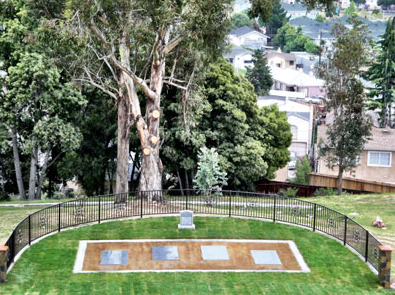 whose mother, aunt, and cousins died in Jonestown, has conducted a memorial service at Evergreen Cemetery in Oakland, California [Image at right] every November 18 since 1979. Norwood raised money to construct a memorial on the site, and in 2008 unveiled two enormous granite blocks with the names of some, but not all, adults who had died in Jonestown. According to Ron Haulman, manager of the cemetery, however, the fragile hillside could not support the size or weight of the monuments (Haulman 2011). In 2010, frustrated with the slow pace of the memorialization process, three relatives of Jonestown victims (Jim Jones Jr., John Cobb, and Fielding McGehee) created the Jonestown Memorial Fund and signed a contract with Evergreen Cemetery, agreeing to create a monument consistent with environmental constraints at the hillside (McGehee 2011). In 2011 the three raised $20,000 in three weeks from 120 former Temple members, relatives, scholars, and others. In May 2011, Norwood sued to halt installation of the memorial, claiming that she had a prior claim with the cemetery. The court ruled against her, given that by the time of her suit, the new memorial (four granite plaques that list the names of all who died) was already in place.
whose mother, aunt, and cousins died in Jonestown, has conducted a memorial service at Evergreen Cemetery in Oakland, California [Image at right] every November 18 since 1979. Norwood raised money to construct a memorial on the site, and in 2008 unveiled two enormous granite blocks with the names of some, but not all, adults who had died in Jonestown. According to Ron Haulman, manager of the cemetery, however, the fragile hillside could not support the size or weight of the monuments (Haulman 2011). In 2010, frustrated with the slow pace of the memorialization process, three relatives of Jonestown victims (Jim Jones Jr., John Cobb, and Fielding McGehee) created the Jonestown Memorial Fund and signed a contract with Evergreen Cemetery, agreeing to create a monument consistent with environmental constraints at the hillside (McGehee 2011). In 2011 the three raised $20,000 in three weeks from 120 former Temple members, relatives, scholars, and others. In May 2011, Norwood sued to halt installation of the memorial, claiming that she had a prior claim with the cemetery. The court ruled against her, given that by the time of her suit, the new memorial (four granite plaques that list the names of all who died) was already in place.
In addition to the claims of priority, Norwood objected to the inclusion of Jim Jones in the listing of names. Though aware of opposition and concern about including Jones’ name on the monument, the organizers of the Jonestown Memorial Fund nevertheless argued that the four-by-eight stones serve as an historical marker of the deaths of all who died on November 18, 1978. For this reason, Jim Jones’ name appears, listed alphabetically among all of the other persons named “Jones” who died that day.
7. What are the lessons of Jonestown? Jonestown and Jim Jones have entered American discourse as code for the perils of cults and cult leaders (Moore 2018b). In the conflict between anticultists and members of new religions in the 1980s, parents, deprogrammers, exit counselors, and psychiatrists pointed to Jonestown as the paradigm for all that could go wrong with unconventional religions (Shupe, Bromley, and Breschel 1989). As these authors wrote, “There was inestimable symbolic value for a countermovement in an event such as Jonestown” (1989:163-66). More than thirty years after the event, Jonestown and Jim Jones continue to symbolize evil, danger, and madness. Those who survived, however, consider it a failed experiment that had its strength in members’ commitment to racial equality and social justice.
In addition, the expression “drinking the Kool-Aid” has found a permanent place in American lexicon (Moore 2003). It is paradoxically used to mean either blindly jumping on the bandwagon, or being a team player, and finds its most frequent usage in the contexts of sports, business, and politics. As is the case with many idiomatic phrases, most of the people who now use the expression are too young to remember its origins in the events of Jonestown. Surviving members of Peoples Temple are horrified and offended by the expression, and the way it trivializes those who died (Carter 2003).
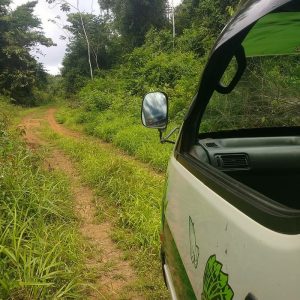
Debate about these and other issues continues, and will undoubtedly continue given the shocking nature of the deaths. [Image at right] Moreover, the fact that hundreds, if not thousands, of government documents still remain classified, suggests that the final story is yet to be written. These files may lend credence to conspiracy theories by exposing the extent of government foreknowledge of the deaths in Jonestown. Alternatively, the information they provide may not do much more than add details to parts of the story that remain vague. Whatever these documents reveal, the story will always remain incomplete and contested, and researchers present and future will continue to wrestle with the enigma that remains Jonestown.
IMAGES
Image #1: Jim Jones speaking from the pulpit of sanctuary in San Francisco, 1976. Photo courtesy The Jonestown Institute.
Image # 2: Peoples Temple Full Gospel Church in Indianapolis, Indiana. Photo courtesy Duane M. Green, 2012, The Jonestown Institute..
Image # 3: Jonestown pioneers visited by Jim Jones, 1974. Photo courtesy Doxsee Phares Collection, The Jonestown Institute.
Image #4: Aerial shot of Jonestown, 1978. Photo courtesy The Jonestown Institute.
Image # 5: John Victor Stoen, the object of a custody battle between Jim Jones and Grace and Timothy Stoen. Photo courtesy California Historical Society.
Image #6: Congressman Leo J. Ryan, who was assassinated on 18 November 1978 by residents of Jonestown. Four other people died in the attack. Photo courtesy California Historical Society.
Image #7: Aerial view of Jonestown with bodies somewhat visible. Photo courtesy The Jonestown Institute.
Image #8: U.S. military personnel engaged in gathering remains in Jonestown. Photo courtesy Preston Jones, John Brown University.
Image # 9: Idealized portrait of Jim Jones standing with children of different races. This was considered the “Rainbow Family,” a goal of Peoples Temple members. Photo courtesy The Jonestown Institute.
Image #10: Children and teenagers enter the sanctuary of San Francisco church, 1974. Photo courtesy The Jonestown Institute.
Image # 11: Agricultural worker in Jonestown. Photo courtesy California Historical Society.
Image #12: Four granite plaques installed at Evergreen Cemetery in Oakland, California, in 2011. There was controversy about including the name of Jim Jones on the plaques. Photo courtesy John Cobb and Regina Hamilton.
Image #13: The road to Jonestown in 2018. Photo courtesy Rikke Wettendorf.
REFERENCES
Alternative Considerations of Jonestown and Peoples Temple. Accessed from http://jonestown.sdsu.edu on 4 June 2012.
Anthony, Dick, Thomas Robbins, and Steven Barrie-Anthony. 2011. “Reciprocal Totalism: The Toxic Interdependence of Anticult and Cult Violence.” Pp. 63-92 in Violence and New Religious Movements, edited by James R. Lewis. New York: Oxford University Press.
“Autopsies.” 1979. Alternative Considerations of Jonestown and Peoples Temple. Accessed from http://jonestown.sdsu.edu/wp-content/uploads/2013/10/JimJones.pdf on 4 June 2012.
Beck, Don. 2005. “The Healings of Jim Jones.” The Jonestown Report 7. Accessed from http://jonestown.sdsu.edu/?page_id=32369 on 7 November 2014.
Bellefountaine, Michael. 2006. “The Limits of Language.” The Jonestown Report 8. Accessed from http://jonestown.sdsu.edu/?page_id=31975 on 7 November 2014.
Bellefountaine, Michael, with Dora Bellefountaine. 2011. A Lavender Look at the Temple: A Gay Perspective of the Peoples Temple. Bloomington, IN: Indiana University Press.
Carter, Mike. 2003. “Drinking the Kool-Aid.” The Jonestown Report, August 5. Alternative Considerations of Jonestown and Peoples Temple. Accessed from https://jonestown.sdsu.edu/?page_id=16987 on 7 May 2021.
Cartmell, Mike. 2006. “ Temple Healings; Magical Thinking.” Alternative Considerations of Jonestown and Peoples Temple. Accessed from http://jonestown.sdsu.edu/?page_id=31911 on 4 June 2012.
Chidester, David. 1988 (reissued 2004). Salvation and Suicide: An Interpretation of Jim Jones, the Peoples Temple, and Jonestown. Bloomington, IN: Indiana University Press.
Concerned Relatives. 1978. “Accusation of Human Rights Violations made by Concerned Relatives, 11 April 1978. Accessed from http://jonestown.sdsu.edu/?page_id=13080 on 7 November 2014.
Hall, John R. 1995. “Public Narratives and the Apocalyptic Sect: From Jonestown to Mt. Carmel.” Pp. 205-35 in Armageddon in Waco: Critical Perspectives on the Branch Davidian Conflict, edited by Stuart A. Wright. Chicago: University of Chicago Press.
Hall, John R. 1987 (reissued 2004). Gone From the Promised Land: Jonestown in American Cultural History. New Brunswick: Transaction Books.
Harrison, F. Milmon. 2004. “Jim Jones and Black Worship Traditions.” Pp. 123-38 in Peoples Temple and Black Religion in America, edited by Rebecca Moore, Anthony B. Pinn, and Mary Sawyer. Bloomington: Indiana University Press.
Haulman, Ronald. 2011. “Declaration of Ronald Haulman in Opposition to Application for a Temporary Restraining Order.” Alternative Considerations of Jonestown and Peoples Temple. Accessed from http://jonestown.sdsu.edu/wp-content/uploads/2013/10/Norwood5a.pdf on 4 June 2012.
Helander, Henri. 2020. “Alternative History (Conspiracy) Theory Index.” Alternative Considerations of Jonestown and Peoples Temple. Accessed from https://jonestown.sdsu.edu/?page_id=95357 on 12 March 2020.
Layton, Deborah. 1998. Seductive Poison: A Jonestown Survivor’s Story of Life and Death in the Peoples Temple. New York: Anchor Books.
Levi, Ken. 1982. Violence and Religious Commitment: Implications of Jim Jones’s Peoples Temple Movement. University Park: The Pennsylvania State University Press.
Maaga, McCormick Mary. 1998. Hearing the Voices of Jonestown. Syracuse: Syracuse University Press.
McGehee, Fielding M. III. 2011. “The Campaign for a New Memorial: A Brief History.” The Jonestown Report 11. Accessed from http://jonestown.sdsu.edu/?page_id=34364 on 7 November 2014.
“Military Response to Jonestown.” 2020. Siloam Springs, AR: John Brown University, at https://www.militaryresponsetojonestown.com/ on 20 March 2020.
Mills, Jeannie. 1979. Six Years With God: Life Inside Rev. Jim Jones’s Peoples Temple. New York: A & W Publishers.
Moore, Rebecca. 2018a. “Examinations by Dr. Leslie Mootoo.” Alternative Considerations of Jonestown and Peoples Temple. Accessed from https://jonestown.sdsu.edu/?page_id=83848 on 12 March 2020.
Moore, Rebecca. 2018b. “Godwin’s Law and Jones’ Corollary: The Problem of Using Extremes to Make Predictions.” Nova Religio 22:145–54.
Moore, Rebecca. 2011. “Narratives of Persecution, Suffering, and Martyrdom: Violence in Peoples Temple and Jonestown.” Pp. 95-11 in Violence and New Religious Movements, edited by James R. Lewis. New York: Oxford University Press.
Moore, Rebecca. 2009 [2018]. Understanding Jonestown and Peoples Temple. Westport, CT: Praeger.
Moore, Rebecca. 2006. “The Sacrament of Suicide.” The Jonestown Report 8. Accessed from http://jonestown.sdsu.edu/?page_id=31985 on 7 November 2014.
Moore, Rebecca. 2005. “Reconstructing Reality: Conspiracy Theories About Jonestown.” Pp. 61-78 in Controversial New Religions, edited by James R. Lewis and Jesper Aagaard Petersen. New York: Oxford University Press. Also available at http://jonestown.sdsu.edu/?page_id=16582.
Moore, Rebecca. 2003. “Drinking the Kool-Aid: The Cultural Transformation of a Tragedy.” Nova Religio 7: 92-100. Also available at http://jonestown.sdsu.edu/?page_id=16584.
Moore, Rebecca. 1986. The Jonestown Letters: Correspondence of the Moore Family 1970-1985. Lewiston, NY: Edwin Mellen Press.
Moore, Rebecca. 1985. A Sympathetic History of Jonestown: The Moore Family Involvement in Peoples Temple. Lewiston, NY: Edwin Mellen Press.
Moton, Pam. 1978. “Exhibit A to Concerned Relatives Accusation of 11 April 1978, Letter to Members of Congress, 14 March 1978.“ Alternative Considerations of Jonestown and Peoples Temple. Accessed from http://jonestown.sdsu.edu/?page_id=13084 on 4 June 2012.
“The NOIWON Notation.” 1978. Alternative Considerations of Jonestown and Peoples Temple. Accessed from http://jonestown.sdsu.edu/?page_id=13678 on 4 June 2012.
Reiterman, Tim, with John Jacobs. 1982. Raven: The Untold Story of The Rev. Jim Jones and His People. New York: E.P. Dutton.
Roller, Edith. “Journals.” Alternative Consideration of Jonestown and Peoples Temple. Accessed from http://jonestown.sdsu.edu/?page_id=35667 on 4 June 2012.
Rose, Steve. 1979. Jesus and Jim Jones: Behind Jonestown. New York: Pilgrim Press.
Rosenbaum, Ron. 1998. Explaining Hitler: The Search for the Origins of His Evil. New York: Random House.
Sawyer, R. Mary. 2004. “The Church in Peoples Temple.” Pp. 166-93 in Peoples Temple and Black Religion in America, edited by Rebecca Moore, Anthony B. Pinn, and Mary Sawyer. Bloomington: Indiana University Press.
Scheeres, Julia. 2011. A Thousand Lives: The Untold Story of Hope, Deception, and Survival at Jonestown. New York: Free Press.
Shupe, Anson, David Bromley, and Edward Breschel. 1989. “The Peoples Temple, the Apocalypse at Jonestown, and the Anti-Cult Movement.” Pp. 153-71 in New Religious Movements, Mass Suicide, and Peoples Temple: Scholarly Perspectives on a Tragedy, edited by Rebecca Moore and Fielding McGehee III. Lewiston, NY: Edwin Mellen Press.
Smith, Archie Jr. 2004. “An Interpretation of Peoples Temple and Jonestown: Implications for the Black Church.” Pp. 47-56 in Peoples Temple and Black Religion in America, edited by Rebecca Moore, Anthony B. Pinn, and Mary Sawyer. Bloomington: Indiana University Press.
Stephenson, Denice, ed. 2005. Dear People: Remembering Jonestown. San Francisco and Berkeley: California Historical Society Press and Heyday Books.
U.S. Committee on Foreign Affairs. 1979. “The Assassination of Representative Leo J. Ryan and the Jonestown, Guyana Tragedy.” U.S. House of Representatives, 96th Congress, First Session. Washington, D.C.: Government Printing Office.
“Was It Murder or Suicide?” 2006. The Jonestown Report 8. Accessed from http://jonestown.sdsu.edu/?page_id=31981 on 7 November 2014.
Wessinger, Catherine. 2000. How the Millennium Comes Violently. New York: Seven Bridges Press.
SUPPLEMENTARY RESOURCES
Alternative Considerations of Jonestown and Peoples Temple is a comprehensive digital library of primary source literature, first-person accounts, and scholarly analyses. It currently provides live streaming of more than 925 audiotapes made by the group during its twenty-five year existence, as well as photographs taken by group members. Approximately 500 tapes are currently available online, along with transcripts and summaries. Founded in 1998 at the University of North Dakota to coincide with the twentieth anniversary of the deaths in Jonestown, the website moved to San Diego State University in 1999, where it has been housed ever since at. The SDSU Library and Special Collections currently manages Alternative Considerations, one of the largest digital archives of a new religion in existence. The site memorializes those who died in the tragedy; documents the numerous government investigations into Peoples Temple and Jonestown (such as more than 70,000 pages from the FBI, including records from its investigation as well as its collection of Temple documents, and 5,000 from the U.S. State Department); and presents Peoples Temple and its members in their own words through articles, tapes, letters, photographs and other items. The site also conveys ongoing news regarding research and events relating to the group.
Bibliography and Audiotape Resources:
A comprehensive bibliography of resources on Peoples Temple and Jonestown can be found here.
Audiotapes recovered in Jonestown, 300 of which are streaming live, can be found here: http://jonestown.sdsu.edu/?page_id=27280
Items Referenced in the profile: The following items, referenced in the above article, can be found on the Alternative Considerations website.
Lease signed between Government of Guyana and Peoples Temple, February 25, 1976. http://jonestown.sdsu.edu/?page_id=13131.
Affidavit signed by Tim Stoen stating that Jim Jones was the father of John Victor Stoen, February 6, 1972. http://jonestown.sdsu.edu/?page_id=13836
Transcript and audiostreaming of Tape Q 042 (the so-called Death Tape), made November 18, 1978. http://jonestown.sdsu.edu/?page_id=29084.
Text of “The Letter Killeth.” http://jonestown.sdsu.edu/?page_id=14111
Text of the “Gang of Eight Letter.” http://jonestown.sdsu.edu/?page_id=14075.
Publication Date:
22 June 2012
Update: 9 May 2021
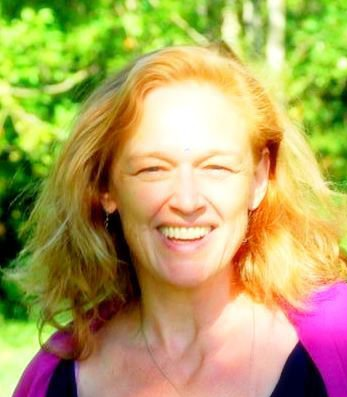
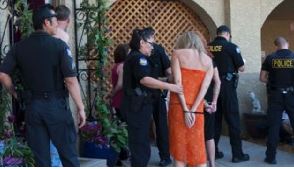 cover story describing the Phoenix Goddess Temple as “nothing more than a New Age brothel” (Stern 2016), A police investigation of the Temple was then launched that led to the arrest of Elise [Image at right] and other Temple staff members and a shutdown of the temple in September 2011
cover story describing the Phoenix Goddess Temple as “nothing more than a New Age brothel” (Stern 2016), A police investigation of the Temple was then launched that led to the arrest of Elise [Image at right] and other Temple staff members and a shutdown of the temple in September 2011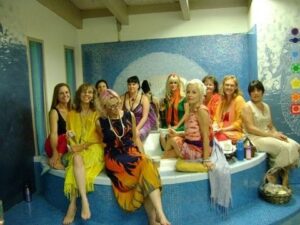 levels and involve instruction from or interaction with a practitioner. Female practitioners are referred to as “goddesses” [Image at right] and generally assume goddess identities such as Shakti, Isis and Aphrodite. Male practitioners are commonly called “touch healers.” According to the Temple website, the church healers “seek to help women, men and couples discover their own divine connection between soul, light body and sacred vessel” and “offer group classes and one-on-one teachings and training, play shops and internships,” all meant to “make use of the gifts of the Goddess” and allow seekers to, among other things, “feel the light of your own soul” and “feel the chakra wheels spinning your self into physical existence.”
levels and involve instruction from or interaction with a practitioner. Female practitioners are referred to as “goddesses” [Image at right] and generally assume goddess identities such as Shakti, Isis and Aphrodite. Male practitioners are commonly called “touch healers.” According to the Temple website, the church healers “seek to help women, men and couples discover their own divine connection between soul, light body and sacred vessel” and “offer group classes and one-on-one teachings and training, play shops and internships,” all meant to “make use of the gifts of the Goddess” and allow seekers to, among other things, “feel the light of your own soul” and “feel the chakra wheels spinning your self into physical existence.”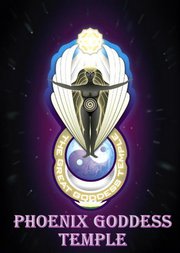 sessions and classes, and organizes events. [Image at right] Temple participants include guests (who seek information about the Temples activities), seekers (“who have a spiritual practice or have had in the past, and are now feeling led to find new sources of energy, direction and connection to the Higher Power”), initiates (“who have found genuine soul-food in our temple”), brothers and sisters (“who have decided to really support the Goddess Temples”), priests and priestesses (“who have a gift for channeling light into matter”), and healers and guides (who have “gifts to give as well as receive”) (Phoenix Goddess Temple n.d. “In Temple”).
sessions and classes, and organizes events. [Image at right] Temple participants include guests (who seek information about the Temples activities), seekers (“who have a spiritual practice or have had in the past, and are now feeling led to find new sources of energy, direction and connection to the Higher Power”), initiates (“who have found genuine soul-food in our temple”), brothers and sisters (“who have decided to really support the Goddess Temples”), priests and priestesses (“who have a gift for channeling light into matter”), and healers and guides (who have “gifts to give as well as receive”) (Phoenix Goddess Temple n.d. “In Temple”).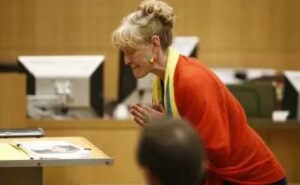 her final argument to the jury, she set up a small alter on the defense table”with pine cones and goddess figurines, then told the court that she was “letting the holy spirit guide me today through this trial” (Brinkman 2016). (Image at right) Finally, she sang the Star Spangled Banner just prior to being sentenced (Walsh 2016).
her final argument to the jury, she set up a small alter on the defense table”with pine cones and goddess figurines, then told the court that she was “letting the holy spirit guide me today through this trial” (Brinkman 2016). (Image at right) Finally, she sang the Star Spangled Banner just prior to being sentenced (Walsh 2016).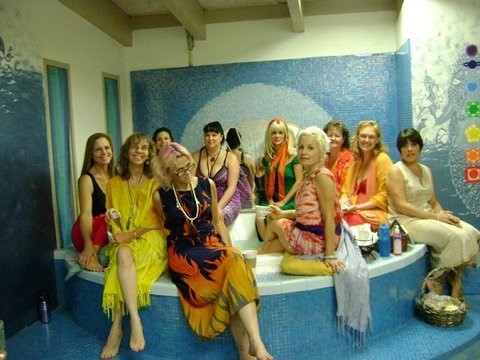

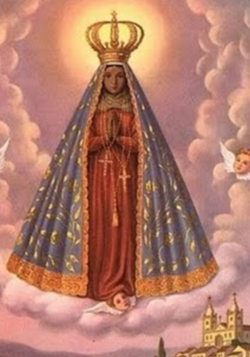 Our Lady of the Immaculate Conception, the Virgin Mary. They named her Our Lady of the Conception Who Appeared from the Waters, which was subsequently shortened to Our Lady Aparecida. The men wrapped her in cloth, continued fishing, and soon had enough fish to provide a sumptuous feast. The appearance of Our Lady of Aparecida came to be regarded as a double miracle. To the faithful, it was miraculous, first, that the fishermen found both the body and the head of the statue simultaneously and, second, that finding the statue was followed by a bountiful harvest of fish. This miracle resonates with a biblical narrative in which Jesus appears to unsuccessful fishermen, telling them to cast their nets again, which leads them to an abundant catch.
Our Lady of the Immaculate Conception, the Virgin Mary. They named her Our Lady of the Conception Who Appeared from the Waters, which was subsequently shortened to Our Lady Aparecida. The men wrapped her in cloth, continued fishing, and soon had enough fish to provide a sumptuous feast. The appearance of Our Lady of Aparecida came to be regarded as a double miracle. To the faithful, it was miraculous, first, that the fishermen found both the body and the head of the statue simultaneously and, second, that finding the statue was followed by a bountiful harvest of fish. This miracle resonates with a biblical narrative in which Jesus appears to unsuccessful fishermen, telling them to cast their nets again, which leads them to an abundant catch.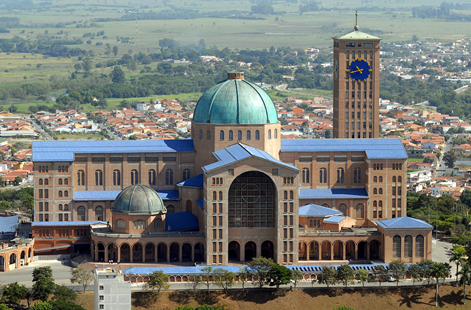 of Aparecida on May 31 of the next year. In 1931, Getulio Vargas seized power in Brazil after a military coup d’etat. While in power he sought to create a unified Brazil and so promoted a semi-official Catholic Church with Our Lady of Aparecida as its sign. Vargas’s reign as dictator ended in 1945, but by then the plans were already underway for a new basilica. In 1959, Our Lady of Aparecida was moved to the unfinished building. In the meantime, after a period of civilian government, military rule returned in 1964. Catello Branco, who was designated as president, symbolically named Our Lady of Aparecida to be the highest general of the Brazilian Army in an attempt to restrict how public spaces could be used. When the new basilica was finally completed in 1980, Pope John Paul II visited and blessed her shrine. His visit led to the creation of a law which named October 12, her likely date of discovery, an official national Brazilian holiday. The mixing of religious and political legitimation for Our Lady of Aparecida has been controversial but has also meant that Our Lady has been not only a symbol of the Catholic Church but also of Brazil as a nation (Johnson 1997:129).
of Aparecida on May 31 of the next year. In 1931, Getulio Vargas seized power in Brazil after a military coup d’etat. While in power he sought to create a unified Brazil and so promoted a semi-official Catholic Church with Our Lady of Aparecida as its sign. Vargas’s reign as dictator ended in 1945, but by then the plans were already underway for a new basilica. In 1959, Our Lady of Aparecida was moved to the unfinished building. In the meantime, after a period of civilian government, military rule returned in 1964. Catello Branco, who was designated as president, symbolically named Our Lady of Aparecida to be the highest general of the Brazilian Army in an attempt to restrict how public spaces could be used. When the new basilica was finally completed in 1980, Pope John Paul II visited and blessed her shrine. His visit led to the creation of a law which named October 12, her likely date of discovery, an official national Brazilian holiday. The mixing of religious and political legitimation for Our Lady of Aparecida has been controversial but has also meant that Our Lady has been not only a symbol of the Catholic Church but also of Brazil as a nation (Johnson 1997:129).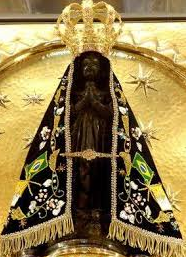 was first moved into its prayer chapel near the river, miraculous events were reported: candles that blew out in the chapel would relight, a slave running from a cruel master prayed to the idol for freedom and his chains were released, a blind girl received sight, and a man who wished to harm the statue found his horse’s feet “locked fast to the ground at the entrance of the building” when he tried to enter the chapel (“Our Lady Aparecida” n.d.). Further, while the new basilica was being constructed, it was reported that the every evening the statue was moved to reside in the in progressing Basilica, but every morning, she would appear back in the old Basilica. This went on for several years. Eventually, it is believed, the statue gave up and realized that no member of the clergy was going to heed her desire to remain at her old resting place.
was first moved into its prayer chapel near the river, miraculous events were reported: candles that blew out in the chapel would relight, a slave running from a cruel master prayed to the idol for freedom and his chains were released, a blind girl received sight, and a man who wished to harm the statue found his horse’s feet “locked fast to the ground at the entrance of the building” when he tried to enter the chapel (“Our Lady Aparecida” n.d.). Further, while the new basilica was being constructed, it was reported that the every evening the statue was moved to reside in the in progressing Basilica, but every morning, she would appear back in the old Basilica. This went on for several years. Eventually, it is believed, the statue gave up and realized that no member of the clergy was going to heed her desire to remain at her old resting place.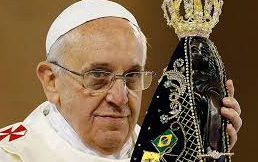 around her shoulders and a large crown adorns her head), what honors and special titles she has been given, and the official date for her celebration are controlled by various units of the Catholic church, one might say that actual leadership resides with the pilgrims. When Pope John Paul II visited Brazil in 1980 and great preparation was made to receive the expected increase in pilgrims to Aparecida to coincide with his visit, officials were surprised when no more than the normal 300,000 appeared, as opposed to the 2,000,000 who were expected. It seems that the pilgrims intended to follow their traditional schedules with regard to the Lady and to wait until the Pope visited their own locales to pay tribute to him.
around her shoulders and a large crown adorns her head), what honors and special titles she has been given, and the official date for her celebration are controlled by various units of the Catholic church, one might say that actual leadership resides with the pilgrims. When Pope John Paul II visited Brazil in 1980 and great preparation was made to receive the expected increase in pilgrims to Aparecida to coincide with his visit, officials were surprised when no more than the normal 300,000 appeared, as opposed to the 2,000,000 who were expected. It seems that the pilgrims intended to follow their traditional schedules with regard to the Lady and to wait until the Pope visited their own locales to pay tribute to him.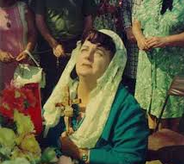 Marian seer. Lueken’s first mystical experiences followed the assassination of Senator Robert Kennedy on June 5, 1968. The next day, as Kennedy lay in the hospital, Lueken was praying for his recovery when she felt herself surrounded by an overwhelming fragrance of roses. Although the senator died late that night, the inexplicable smell of roses continued to haunt her. Soon she would wake up to find she had written poetry that she could not remember writing. She had prayed to St. Therese of Lisieux to save senator Kennedy and suspected that Therese was somehow the true author of these poems. She discussed these experiences with the priests at her parish church, St. Robert Bellarmine’s, but she felt they did not take her seriously. Her husband, Arthur, also discouraged any discussion of miracles.
Marian seer. Lueken’s first mystical experiences followed the assassination of Senator Robert Kennedy on June 5, 1968. The next day, as Kennedy lay in the hospital, Lueken was praying for his recovery when she felt herself surrounded by an overwhelming fragrance of roses. Although the senator died late that night, the inexplicable smell of roses continued to haunt her. Soon she would wake up to find she had written poetry that she could not remember writing. She had prayed to St. Therese of Lisieux to save senator Kennedy and suspected that Therese was somehow the true author of these poems. She discussed these experiences with the priests at her parish church, St. Robert Bellarmine’s, but she felt they did not take her seriously. Her husband, Arthur, also discouraged any discussion of miracles.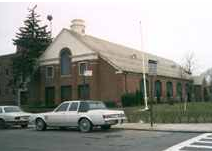 Bellarmine’s church in Bayside “when the roses are in bloom.” On the night of June 18, 1970, Lueken knelt alone in the rain praying the rosary before a statue of the Immaculate Conception outside her church. Here, Mary appeared to Lueken and instructed her that she was a bride of Christ, that she wept for the sins of the world, and that everyone must return to saying the rosary. Lueken announced that a national shrine should be built on the church grounds and that Mary would henceforth appear there on every Catholic feast day. Over the next two years, a small body of followers joined Lueken in her vigils in front of the statue. At each appearance, Lueken would deliver a “message from heaven,” spoken through her by Mary as well as a growing cast of saints and angels. These messages typically included jeremiads about the weight of America’s sins and warnings of a coming chastisement (Lueken 1998: vol. 1).
Bellarmine’s church in Bayside “when the roses are in bloom.” On the night of June 18, 1970, Lueken knelt alone in the rain praying the rosary before a statue of the Immaculate Conception outside her church. Here, Mary appeared to Lueken and instructed her that she was a bride of Christ, that she wept for the sins of the world, and that everyone must return to saying the rosary. Lueken announced that a national shrine should be built on the church grounds and that Mary would henceforth appear there on every Catholic feast day. Over the next two years, a small body of followers joined Lueken in her vigils in front of the statue. At each appearance, Lueken would deliver a “message from heaven,” spoken through her by Mary as well as a growing cast of saints and angels. These messages typically included jeremiads about the weight of America’s sins and warnings of a coming chastisement (Lueken 1998: vol. 1).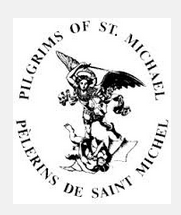 The Pilgrims were also known as “the White Berets” for the hats they wore. Like Lueken, they were disturbed by the reforms of Vatican II. The White Berets declared Lueken to be “the seer of the age” and printed her messages from heaven in their newsletter. They also began organizing buses that transported hundreds of pilgrims to attend vigils in front of Lueken’s parish church. Lueken’s messages began to hint at global conspiracies, a coming nuclear war, and a celestial body called “The Fiery Ball of Redemption” that would soon strike the Earth, causing planet-wide destruction.
The Pilgrims were also known as “the White Berets” for the hats they wore. Like Lueken, they were disturbed by the reforms of Vatican II. The White Berets declared Lueken to be “the seer of the age” and printed her messages from heaven in their newsletter. They also began organizing buses that transported hundreds of pilgrims to attend vigils in front of Lueken’s parish church. Lueken’s messages began to hint at global conspiracies, a coming nuclear war, and a celestial body called “The Fiery Ball of Redemption” that would soon strike the Earth, causing planet-wide destruction.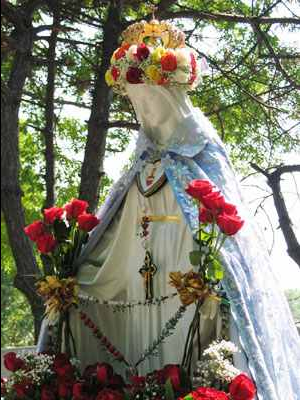
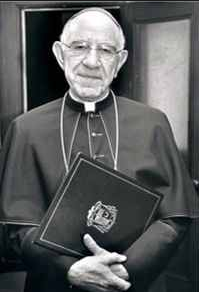 contradicted Catholic doctrine (Goldman 1987). Mugavero’s findings were sent to three hundred bishops throughout the United States and one hundred conferences of bishops around the world. Despite this censure from Church authorities, Lueken’s followers still identify as Catholics in good standing and they defend their views citing canon law. They contend that Lueken’s visions never received a proper investigation led by a bishop, and that the diocese’s dismissal of Lueken is therefore not legitimate. If anyone has violated Church law, they argue, it is the modernists whom Lueken condemned for receiving communion in the hand and other ritual transgressions that go against long-established Catholic tradition.
contradicted Catholic doctrine (Goldman 1987). Mugavero’s findings were sent to three hundred bishops throughout the United States and one hundred conferences of bishops around the world. Despite this censure from Church authorities, Lueken’s followers still identify as Catholics in good standing and they defend their views citing canon law. They contend that Lueken’s visions never received a proper investigation led by a bishop, and that the diocese’s dismissal of Lueken is therefore not legitimate. If anyone has violated Church law, they argue, it is the modernists whom Lueken condemned for receiving communion in the hand and other ritual transgressions that go against long-established Catholic tradition.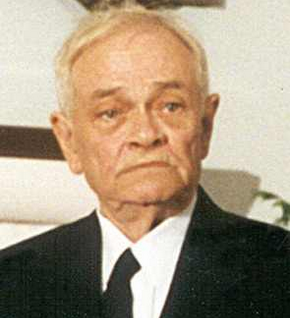 pilgrimages to Flushing Meadows with followers from around the world. But in 1997, a schism occurred between the shrine’s director, Michael Mangan, and Lueken’s widower, Arthur Lueken. A judge ruled in favor of Arthur Lueken, declaring him president of Our Lady of the Roses Shrine (OLR) and awarding him all of the organization’s assets and facilities. Undaunted, Mangan formed his own group, Saint Michael’s World Apostolate (SMWA). Both groups continued to arrive at the movement’s sacred site in Flushing Meadows where they held rival vigils. Once again, police were sent out to keep the peace (Kilgannon 2003). Today, this conflict has thawed into a detente. Their celebrations of Catholic feast days are sometimes timed such that only one group will be present in the park on a given day. For events where both groups must be present, such as Sunday morning holy hour, they alternate which group will have access to the monument. One group may set its statue of the Virgin Mary on the Vatican Monument, the other must use a nearby traffic island. The rival groups have decided it is in everyone’s interests to appear professional while in the park.
pilgrimages to Flushing Meadows with followers from around the world. But in 1997, a schism occurred between the shrine’s director, Michael Mangan, and Lueken’s widower, Arthur Lueken. A judge ruled in favor of Arthur Lueken, declaring him president of Our Lady of the Roses Shrine (OLR) and awarding him all of the organization’s assets and facilities. Undaunted, Mangan formed his own group, Saint Michael’s World Apostolate (SMWA). Both groups continued to arrive at the movement’s sacred site in Flushing Meadows where they held rival vigils. Once again, police were sent out to keep the peace (Kilgannon 2003). Today, this conflict has thawed into a detente. Their celebrations of Catholic feast days are sometimes timed such that only one group will be present in the park on a given day. For events where both groups must be present, such as Sunday morning holy hour, they alternate which group will have access to the monument. One group may set its statue of the Virgin Mary on the Vatican Monument, the other must use a nearby traffic island. The rival groups have decided it is in everyone’s interests to appear professional while in the park. have been a trope in Marian apparitions since the nineteenth century. Lueken’s visions repeatedly described a fiery celestial object called “The Ball of Redemption” (possibly a comet, although this is not clear), that will collide with the Earth, killing much of the population. Her visions also describe World War III, which will include a full nuclear exchange. Horrifying descriptions of nuclear war have also been common in Marian Apparitions since the start of the Cold War. Unlike Protestant dispensationalism, Baysiders believe that the Chastisement can be postponed through prayer. When prophecies do not come to pass, Baysiders often take credit for earning the world a reprieve from judgment.
have been a trope in Marian apparitions since the nineteenth century. Lueken’s visions repeatedly described a fiery celestial object called “The Ball of Redemption” (possibly a comet, although this is not clear), that will collide with the Earth, killing much of the population. Her visions also describe World War III, which will include a full nuclear exchange. Horrifying descriptions of nuclear war have also been common in Marian Apparitions since the start of the Cold War. Unlike Protestant dispensationalism, Baysiders believe that the Chastisement can be postponed through prayer. When prophecies do not come to pass, Baysiders often take credit for earning the world a reprieve from judgment.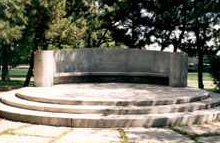 Hour” every Sunday that is dedicated to prayer for the priesthood. These events are held around a monument built in Flushing Meadows Park as part of the Vatican Pavilion during the 1964 World’s Fair. The monument, known as The Excedra, is a simple curved bench resembling an unrolling scroll. During vigils, the monument is transformed into a shrine. A fiberglass statue of Mary is ensconced on top of the bench and surrounded with by candles, flags representing the United States and the Vatican, and other ritual objects. The grounds are also consecrated with holy water.
Hour” every Sunday that is dedicated to prayer for the priesthood. These events are held around a monument built in Flushing Meadows Park as part of the Vatican Pavilion during the 1964 World’s Fair. The monument, known as The Excedra, is a simple curved bench resembling an unrolling scroll. During vigils, the monument is transformed into a shrine. A fiberglass statue of Mary is ensconced on top of the bench and surrounded with by candles, flags representing the United States and the Vatican, and other ritual objects. The grounds are also consecrated with holy water.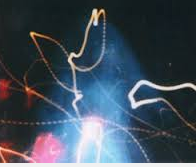 movement coincided with the development of Polaroid cameras. Many pilgrims took Polaroids during the vigils and found anomalies in the film. Most of these effects are easily attributable to user error or to ambient light sources like candles or car lights. Some, however, are more spectacular and difficult to explain. These anomalies were regarded as messages from heaven (Wojcik 1996, 2009). While Lueken was alive, people could bring her their “miraculous Polaroids” and she would interpret the streaks and blurs that appeared on the film, finding their symbolic significance (Chute and Simpson 1976). Today, ordinary Baysiders have developed codes to interpret the anomalies. During vigils, pilgrims take many photos and continue to find anomalies. While digital cameras are used, some Pilgrims prefer to use vintage Polaroid cameras like those used during the original vigils. Discovering a “message from heaven” in a photograph can be a source of great personal meaning for some Baysiders.
movement coincided with the development of Polaroid cameras. Many pilgrims took Polaroids during the vigils and found anomalies in the film. Most of these effects are easily attributable to user error or to ambient light sources like candles or car lights. Some, however, are more spectacular and difficult to explain. These anomalies were regarded as messages from heaven (Wojcik 1996, 2009). While Lueken was alive, people could bring her their “miraculous Polaroids” and she would interpret the streaks and blurs that appeared on the film, finding their symbolic significance (Chute and Simpson 1976). Today, ordinary Baysiders have developed codes to interpret the anomalies. During vigils, pilgrims take many photos and continue to find anomalies. While digital cameras are used, some Pilgrims prefer to use vintage Polaroid cameras like those used during the original vigils. Discovering a “message from heaven” in a photograph can be a source of great personal meaning for some Baysiders.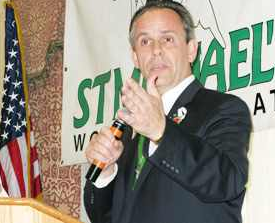 Park. Saint Michael’s World Apostolate is the larger group, which is led by Michael Mangan. Although a court awarded the name “Our Lady of the Roses Shrine” to Veronica Lueken’s widower, Mangan’s group had more support from pilgrims and acquired more infrastructure. When Our Lady of the Roses Shrine was unable to maintain their printing presses, Mangan’s group arranged to buy them. Saint Michael’s World Apostolate is headed by a group of men called the Lay Order of Saint Michael, who live together in a religious community. They are supported by numerous shrine workers who help to raise funds, disseminate the messages, and organize vigils.
Park. Saint Michael’s World Apostolate is the larger group, which is led by Michael Mangan. Although a court awarded the name “Our Lady of the Roses Shrine” to Veronica Lueken’s widower, Mangan’s group had more support from pilgrims and acquired more infrastructure. When Our Lady of the Roses Shrine was unable to maintain their printing presses, Mangan’s group arranged to buy them. Saint Michael’s World Apostolate is headed by a group of men called the Lay Order of Saint Michael, who live together in a religious community. They are supported by numerous shrine workers who help to raise funds, disseminate the messages, and organize vigils.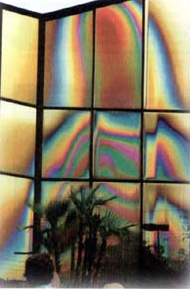
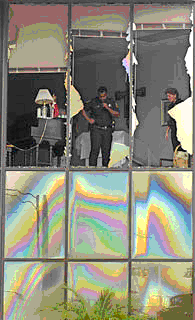
 reported Mary’s request for the distribution of not only “Mary’s Message,” but also several other books published by the Shepherds of Christ Ministries, including God’s Blue Book and Rosaries from the Hearts of Jesus and Mary. Further, many of the messages conveyed God’s wrath with human sinfulness and the failure to listen to previous messages, threatening humanity with fire, even citing religious negligence and divine wrath as the source of contemporary wildfires across Florida. There have also been prophecies of an imminent Endtime. All of Ring’s messages have been discerned by Father Carter.
reported Mary’s request for the distribution of not only “Mary’s Message,” but also several other books published by the Shepherds of Christ Ministries, including God’s Blue Book and Rosaries from the Hearts of Jesus and Mary. Further, many of the messages conveyed God’s wrath with human sinfulness and the failure to listen to previous messages, threatening humanity with fire, even citing religious negligence and divine wrath as the source of contemporary wildfires across Florida. There have also been prophecies of an imminent Endtime. All of Ring’s messages have been discerned by Father Carter.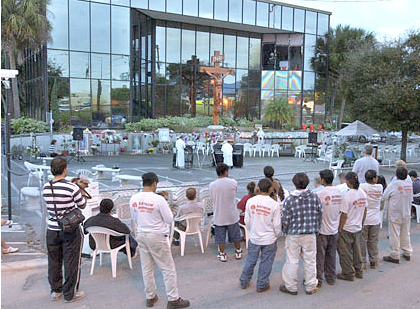 leave offerings to the Virgin, such as “candles, flowers, fruit, [and] beads, and participate in individual acts of piety (Posner 1997:2). Mary’s requests for pilgrims, as reported by Ring, include prayer, a daily recitation of the Ten Commandments at the site, recitation of the rosary, and an observance of the First Saturday devotion. In order to fulfill the Virgin’s requests to distribute her messages and lead others into prayer, audiotapes of “Mary’s Message” are played and rosaries, pamphlets, and brochures are provided by site staff (Swatos 2002:192). The focus on individual worship, rather than “the communal sense of the Mass,” is one of the primary factors setting the Clearwater group’s organization apart from traditional Catholic configuration (Swatos 2002).
leave offerings to the Virgin, such as “candles, flowers, fruit, [and] beads, and participate in individual acts of piety (Posner 1997:2). Mary’s requests for pilgrims, as reported by Ring, include prayer, a daily recitation of the Ten Commandments at the site, recitation of the rosary, and an observance of the First Saturday devotion. In order to fulfill the Virgin’s requests to distribute her messages and lead others into prayer, audiotapes of “Mary’s Message” are played and rosaries, pamphlets, and brochures are provided by site staff (Swatos 2002:192). The focus on individual worship, rather than “the communal sense of the Mass,” is one of the primary factors setting the Clearwater group’s organization apart from traditional Catholic configuration (Swatos 2002).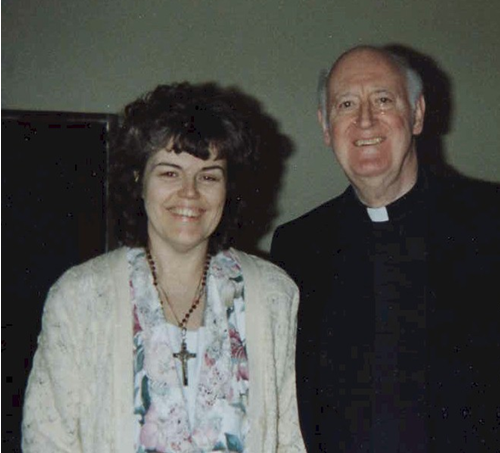 the Shepherds of Christ Ministry. She reportedly began receiving “private revelations” from Jesus and Mary in 1991, several years prior to reporting messages associated with the image at Our Lady of Clearwater. More is known about Father Edward Carter. He was brought up I Cincinnati, attended Xavier University, was ordained in the Jesuit Order when he was 33 years-old, and taught theology at Xavier University for nearly three decades. Carter reports having begun receiving messages from Jesus during the summer, 1993, and on the day before Easter in 1994 was told that he would now begin to receive messages for others (Carter 2010). He founded the Shepherds of Christ Ministry in 1994 after the Batavia Vissionary was instructed to include him with the other priests who were to receive messages through her and to carry out the special mission of establishing the Shepherds of Christ. Carter also received a message from Jesus in which he was told to undertake this mission and to include Rita Ring: ” I am requesting that a new prayer movement be started under the direction of Shepherds of Christ Ministries…. I will use this new prayer movement within My Shepherds of Christ Ministries in a powerful way to help in the renewal of My Church and the world. I will give great graces to those who join this movement…. I am inviting My beloved Rita Ring to be coordinator for this activity” (“About” 2006).
the Shepherds of Christ Ministry. She reportedly began receiving “private revelations” from Jesus and Mary in 1991, several years prior to reporting messages associated with the image at Our Lady of Clearwater. More is known about Father Edward Carter. He was brought up I Cincinnati, attended Xavier University, was ordained in the Jesuit Order when he was 33 years-old, and taught theology at Xavier University for nearly three decades. Carter reports having begun receiving messages from Jesus during the summer, 1993, and on the day before Easter in 1994 was told that he would now begin to receive messages for others (Carter 2010). He founded the Shepherds of Christ Ministry in 1994 after the Batavia Vissionary was instructed to include him with the other priests who were to receive messages through her and to carry out the special mission of establishing the Shepherds of Christ. Carter also received a message from Jesus in which he was told to undertake this mission and to include Rita Ring: ” I am requesting that a new prayer movement be started under the direction of Shepherds of Christ Ministries…. I will use this new prayer movement within My Shepherds of Christ Ministries in a powerful way to help in the renewal of My Church and the world. I will give great graces to those who join this movement…. I am inviting My beloved Rita Ring to be coordinator for this activity” (“About” 2006).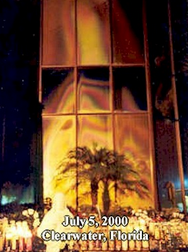 validated (“discerned) her messages. For a time she received messages daily that were made available in the Message Room along with video tapes. Ring visited what became the ” Mary Image Building” on the fifth of each month. Beginning in 2000, the year of Jubilee, the image has appeared to turn completely gold on that day.
validated (“discerned) her messages. For a time she received messages daily that were made available in the Message Room along with video tapes. Ring visited what became the ” Mary Image Building” on the fifth of each month. Beginning in 2000, the year of Jubilee, the image has appeared to turn completely gold on that day.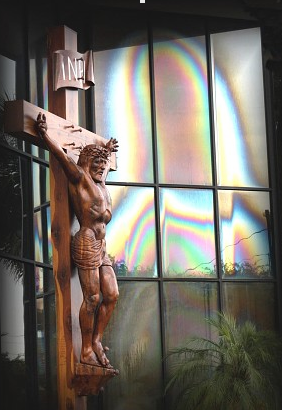
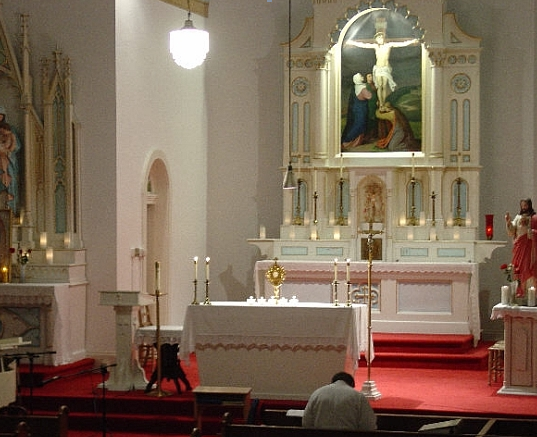 of Christ Ministries presents itself as a lay Catholic organization but has no formal relationship to the church. Site representatives have taken care not to challenge Roman Catholic Church authority. For example, the group indicated that it would seek permission from the local diocese before constructing a chapel at the site. Father Carter has repeatedly stated that “I recognize and accept that the final authority regarding private revelations rests with the Holy See of Rome, to whose judgment I willingly submit” (“News” n.d.). The Catholic diocese of St. Petersburg has disavowed any connection to Shepherds of Christ and has called the image a “naturally explained phenomenon.” However, the diocese has not launched an investigation of the site and has not condemned it (“Clearwater Madonna Changes Hands” 1998; Tisch 2004:4). There have other criticisms from within the Catholic community that conclude the apparitions are not authentic (Conte 2006).
of Christ Ministries presents itself as a lay Catholic organization but has no formal relationship to the church. Site representatives have taken care not to challenge Roman Catholic Church authority. For example, the group indicated that it would seek permission from the local diocese before constructing a chapel at the site. Father Carter has repeatedly stated that “I recognize and accept that the final authority regarding private revelations rests with the Holy See of Rome, to whose judgment I willingly submit” (“News” n.d.). The Catholic diocese of St. Petersburg has disavowed any connection to Shepherds of Christ and has called the image a “naturally explained phenomenon.” However, the diocese has not launched an investigation of the site and has not condemned it (“Clearwater Madonna Changes Hands” 1998; Tisch 2004:4). There have other criticisms from within the Catholic community that conclude the apparitions are not authentic (Conte 2006).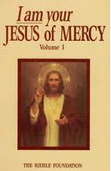 St. Maria Goretti Catholic Church. There, several young people as well as Father Jack Spaulding reported apparitions or locutions of Jesus and of Our Lady, appearing as Our Lady of Joy. These messages from Jesus have been published in six volumes of I Am Your Jesus of Mercy. In 1989, the diocese of Phoenix investigated the Scottsdale apparitions and took a neutral position on the matter.
St. Maria Goretti Catholic Church. There, several young people as well as Father Jack Spaulding reported apparitions or locutions of Jesus and of Our Lady, appearing as Our Lady of Joy. These messages from Jesus have been published in six volumes of I Am Your Jesus of Mercy. In 1989, the diocese of Phoenix investigated the Scottsdale apparitions and took a neutral position on the matter.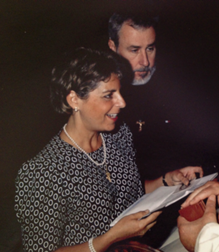 Grotto of Our Lady of Lourdes. Now run by Mt. St. Mary’s University, the site centers upon a replica of the 1858 apparition site in Lourdes, France, and also features a Glass Chapel and visitor’s center. A walkway winds through Stations of the Cross and a Rosary Walk, ending at the foot of a large metal Crucifix atop a wooded hill. This is where Gianna received her first apparition in Emmitsburg. Our Lady, clothed in a blue dress and white veil, invited Gianna and Michael to move to the small town, if they were willing. They were given three days to make the decision, and returned home to Arizona to consider the invitation.
Grotto of Our Lady of Lourdes. Now run by Mt. St. Mary’s University, the site centers upon a replica of the 1858 apparition site in Lourdes, France, and also features a Glass Chapel and visitor’s center. A walkway winds through Stations of the Cross and a Rosary Walk, ending at the foot of a large metal Crucifix atop a wooded hill. This is where Gianna received her first apparition in Emmitsburg. Our Lady, clothed in a blue dress and white veil, invited Gianna and Michael to move to the small town, if they were willing. They were given three days to make the decision, and returned home to Arizona to consider the invitation.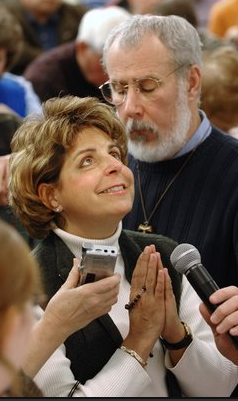 Group at St. Joseph Catholic Church in Emmitsburg. Gianna received a vision at her first prayer meeting, surprising fellow devotees when she fell to her knees and began conversing with Our Lady. Father Alfred Pehrsson, C.M., the parish pastor she had met during her January visit to Emmitsburg, explained to parishioners what had happened and implored them to keep quiet about what they had seen so as not to call undue attention to Gianna or the prayer group. Nevertheless, attendance at the Thursday Marian Prayer Group grew as news of the visionary spread. As many as 1,000 visitors attended weekly (Gaul 2002), including several priests, bishops from other countries, and even non-Catholic visitors. Close to 700,000 people attended between 1994 and 2008 (G. Sullivan 2008). Church groups throughout the region organized bus trips to Emmitsburg, and many families drove several hours to spend the day visiting the town. The numbers of conversions and confessions increased, and Fr. Pehrsson even heard confessions from Jewish and Protestant attendees (Pehrsson n.d.). Many attendees reported miracles during the service: a spinning sun or two suns, healings, and once, the lights of heaven visible in Gianna’s eyes during ecstasy. Every week, several rows of pews were reserved at the church for parishioners, but others had to arrive before noon (for the 7 PM service) in order to find a seat. Overflow crowds were directed to the church rectory across the street, where a television screen was set up so that all could see Gianna. Problematically, crowds set up blankets and chairs on the lawn and cemetery surrounding the church, and parked illegally throughout the small town. In response, some Protestant churches in the area opened their parking lots to pilgrims.
Group at St. Joseph Catholic Church in Emmitsburg. Gianna received a vision at her first prayer meeting, surprising fellow devotees when she fell to her knees and began conversing with Our Lady. Father Alfred Pehrsson, C.M., the parish pastor she had met during her January visit to Emmitsburg, explained to parishioners what had happened and implored them to keep quiet about what they had seen so as not to call undue attention to Gianna or the prayer group. Nevertheless, attendance at the Thursday Marian Prayer Group grew as news of the visionary spread. As many as 1,000 visitors attended weekly (Gaul 2002), including several priests, bishops from other countries, and even non-Catholic visitors. Close to 700,000 people attended between 1994 and 2008 (G. Sullivan 2008). Church groups throughout the region organized bus trips to Emmitsburg, and many families drove several hours to spend the day visiting the town. The numbers of conversions and confessions increased, and Fr. Pehrsson even heard confessions from Jewish and Protestant attendees (Pehrsson n.d.). Many attendees reported miracles during the service: a spinning sun or two suns, healings, and once, the lights of heaven visible in Gianna’s eyes during ecstasy. Every week, several rows of pews were reserved at the church for parishioners, but others had to arrive before noon (for the 7 PM service) in order to find a seat. Overflow crowds were directed to the church rectory across the street, where a television screen was set up so that all could see Gianna. Problematically, crowds set up blankets and chairs on the lawn and cemetery surrounding the church, and parked illegally throughout the small town. In response, some Protestant churches in the area opened their parking lots to pilgrims.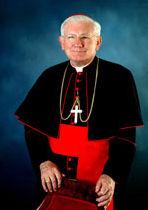 Commission was unfair to Gianna, spending very little time with her and prohibiting her supporters (including theologians) from speaking on her behalf. Gianna was permitted to answer only the questions posed to her by the Commission, rather than tell her whole story.
Commission was unfair to Gianna, spending very little time with her and prohibiting her supporters (including theologians) from speaking on her behalf. Gianna was permitted to answer only the questions posed to her by the Commission, rather than tell her whole story. Cult Watch , took a negative view of the apparitions, supporters, and visionary. Father Kieran Kavanaugh, O.C.D., Gianna’s spiritual advisor, was silenced when Cardinal Keeler ordered Fr. Kavanaugh’s superior to temporarily restrict the priest from attending the monthly prayer meetings. Father Alfred Pehrsson, the parish priest at St. Joseph who had since been relocated to another parish, was also asked by his superiors not to speak about the Emmitsburg apparitions. Both men have remained reticent to speak about the Emmitsburg events.
Cult Watch , took a negative view of the apparitions, supporters, and visionary. Father Kieran Kavanaugh, O.C.D., Gianna’s spiritual advisor, was silenced when Cardinal Keeler ordered Fr. Kavanaugh’s superior to temporarily restrict the priest from attending the monthly prayer meetings. Father Alfred Pehrsson, the parish priest at St. Joseph who had since been relocated to another parish, was also asked by his superiors not to speak about the Emmitsburg apparitions. Both men have remained reticent to speak about the Emmitsburg events.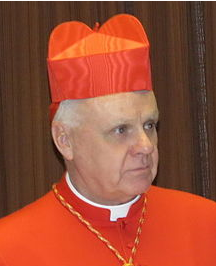 leadership, Gianna wrote a letter to Archbishop O’Brien informing him of the history of the apparitions in Emmitsburg and assuring him that she would comply with his wishes regarding the monthly prayer meetings held at Lynfield. Archbishop O’Brien did not respond to Gianna’s letter directly, but instead released a Pastoral Advisory in 2008 repeating the Church’s position that the messages were not supernatural. While he admitted in the Pastoral Advisory that there is nothing necessarily sacrilegious about the messages, he asserted his view that the “alleged apparitions are not supernatural in origin” (O’Brien 2008). He further “strongly” cautioned Mrs. Gianna Talone-Sullivan not to communicate in any manner whatsoever, written or spoken, electronic or printed, personally or through another in any church, public oratory, chapel or any other place or locale, public or private, within the jurisdiction of the Archdiocese of Baltimore any information of any type related to or containing messages or locutions allegedly received from the Virgin Mother of God.
leadership, Gianna wrote a letter to Archbishop O’Brien informing him of the history of the apparitions in Emmitsburg and assuring him that she would comply with his wishes regarding the monthly prayer meetings held at Lynfield. Archbishop O’Brien did not respond to Gianna’s letter directly, but instead released a Pastoral Advisory in 2008 repeating the Church’s position that the messages were not supernatural. While he admitted in the Pastoral Advisory that there is nothing necessarily sacrilegious about the messages, he asserted his view that the “alleged apparitions are not supernatural in origin” (O’Brien 2008). He further “strongly” cautioned Mrs. Gianna Talone-Sullivan not to communicate in any manner whatsoever, written or spoken, electronic or printed, personally or through another in any church, public oratory, chapel or any other place or locale, public or private, within the jurisdiction of the Archdiocese of Baltimore any information of any type related to or containing messages or locutions allegedly received from the Virgin Mother of God.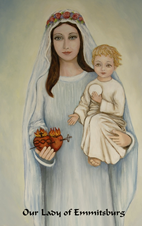 many messages assuring them that she is not leaving Emmitsburg. The February 5, 2006 message, for instance, assures listeners that Emmitsburg is the Center of Our Lady’s Immaculate Heart despite opposition from some Church leaders, then continues, “Know that I am not leaving and that I intercede for all good things for you before the Throne of God.” The October 5, 2008 message (just before the Pastoral Advisory was released) repeats this theme: “know that I am here with you. I am not leaving , even if you think I am far away.”
many messages assuring them that she is not leaving Emmitsburg. The February 5, 2006 message, for instance, assures listeners that Emmitsburg is the Center of Our Lady’s Immaculate Heart despite opposition from some Church leaders, then continues, “Know that I am not leaving and that I intercede for all good things for you before the Throne of God.” The October 5, 2008 message (just before the Pastoral Advisory was released) repeats this theme: “know that I am here with you. I am not leaving , even if you think I am far away.”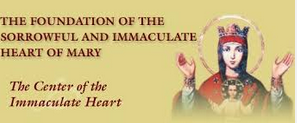 Revelations 12:1 is another helpful source of historical information. Both organizations maintain websites easily accessible by any internet search engine, the Foundation of the Sorrowful and Immaculate Heart of Mary and Private Revelations of Our Lady of Emmitsburg . Both organizations officially are located in Pennsylvania and are thus outside the jurisdiction of the Baltimore Archdiocese and its prohibitions. Notably, Gianna disavowed any involvement with The Foundation in her 2008 response to the Pastoral Advisory.
Revelations 12:1 is another helpful source of historical information. Both organizations maintain websites easily accessible by any internet search engine, the Foundation of the Sorrowful and Immaculate Heart of Mary and Private Revelations of Our Lady of Emmitsburg . Both organizations officially are located in Pennsylvania and are thus outside the jurisdiction of the Baltimore Archdiocese and its prohibitions. Notably, Gianna disavowed any involvement with The Foundation in her 2008 response to the Pastoral Advisory.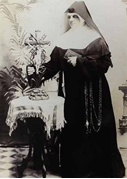 and several friends pledged to join a religious order. However, Brise continued to live with her parents in what was a relatively poor family until 1855 when the family emigrated to America. The family purchased a 240 acre tract of land to support itself. It was four years later, in October, 1859, just a short time after the Marian apparitions at Lourdes, that Brise had the first of three apparitional experiences. She was carrying grain to a mill in Champion, Wisconsin when the Virgin Mary appeared to her: “She saw a lady clothed in dazzling white, with a yellow sash around her waist and a crown of stars around her head standing between two trees, one a maple, the other a hemlock” (Shrine 2010). Brise found the experience frightening. On Sunday, October 9, the second apparitional event occurred when Brise was walking to Mass in Bay Settlement, a neighboring area, with two companions. Only Brise directly experienced the apparition. Finally, when walking home from church, Brise experienced an apparitional figure in the same place for a third and final time. Mary identified herself as the “Queen of Heaven” and told Brise that she must teach the children how to live their lives for God. From that day forward, Brise devoted her life to the teachings of the Catholic faith to young
and several friends pledged to join a religious order. However, Brise continued to live with her parents in what was a relatively poor family until 1855 when the family emigrated to America. The family purchased a 240 acre tract of land to support itself. It was four years later, in October, 1859, just a short time after the Marian apparitions at Lourdes, that Brise had the first of three apparitional experiences. She was carrying grain to a mill in Champion, Wisconsin when the Virgin Mary appeared to her: “She saw a lady clothed in dazzling white, with a yellow sash around her waist and a crown of stars around her head standing between two trees, one a maple, the other a hemlock” (Shrine 2010). Brise found the experience frightening. On Sunday, October 9, the second apparitional event occurred when Brise was walking to Mass in Bay Settlement, a neighboring area, with two companions. Only Brise directly experienced the apparition. Finally, when walking home from church, Brise experienced an apparitional figure in the same place for a third and final time. Mary identified herself as the “Queen of Heaven” and told Brise that she must teach the children how to live their lives for God. From that day forward, Brise devoted her life to the teachings of the Catholic faith to young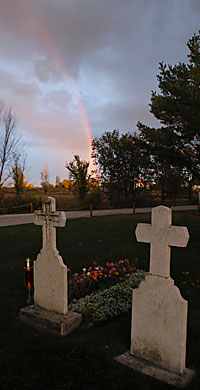 seemed uncertain. The school suffered without her presence and was passed into the hands of Sr. Pauline LaPlante, an original member of the Sisters of St. Francis of the Holy Cross of Bay Settlement (Kasten 2010). She worked to continue the school until her death in 1926 (Mann 2011). In the following years the school changed hands and faces several times. In 1933, it was remodeled as the Home for Crippled Children, and then in 1953, Bishop Paul Rhode discontinued the home and turned it into a pre-noviate high school for the Bay Settlement Sisters. In 1990, it became a House of Prayer for the Bay Settlement Sisters until 1990 when the diocese gained control of the grounds. The diocese converted the property into a shrine and welcomed in a group of Carmelite Sisters who founded the Carmel of the Holy Name of Jesus in 1992 (Kasten 2010). Ten years later the Carmel moved on to rural Denmark.
seemed uncertain. The school suffered without her presence and was passed into the hands of Sr. Pauline LaPlante, an original member of the Sisters of St. Francis of the Holy Cross of Bay Settlement (Kasten 2010). She worked to continue the school until her death in 1926 (Mann 2011). In the following years the school changed hands and faces several times. In 1933, it was remodeled as the Home for Crippled Children, and then in 1953, Bishop Paul Rhode discontinued the home and turned it into a pre-noviate high school for the Bay Settlement Sisters. In 1990, it became a House of Prayer for the Bay Settlement Sisters until 1990 when the diocese gained control of the grounds. The diocese converted the property into a shrine and welcomed in a group of Carmelite Sisters who founded the Carmel of the Holy Name of Jesus in 1992 (Kasten 2010). Ten years later the Carmel moved on to rural Denmark.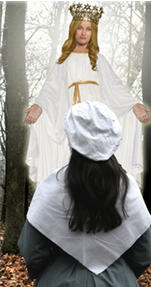 three at the site that would come to be known as Our Lady of Good Help. It was at the third apparitional event, which occurred while Brise was returning home from church that she received her spiritual mission (Shrine 2010; Kasten 2010). Brise reported that she asked the figure “In God’s name who are you and what do you want of me?” Mary reportedly then told Brise that she was the Queen of Heaven and assigned Brise a mission: “I am the Queen of Heaven who prays for the conversion of sinners, and I wish you to do the same. You received Holy Communion this morning and that is well. But you must do more. Make a general confession and offer Communion for the conversion of sinners. If they do not convert and do penance, my Son will be obliged to punish them.” Mary then offer more specific instructions: “Gather the children in this wild country and teach them what they should know for salvation.” When Brise inquired how she might accomplish this mission with little knowledge, Mary responded: “Teach them their catechism, how to sign themselves with the sign of the Cross, and how to approach the sacraments; that is what I wish you to do. Go and fear nothing. I will help you.”
three at the site that would come to be known as Our Lady of Good Help. It was at the third apparitional event, which occurred while Brise was returning home from church that she received her spiritual mission (Shrine 2010; Kasten 2010). Brise reported that she asked the figure “In God’s name who are you and what do you want of me?” Mary reportedly then told Brise that she was the Queen of Heaven and assigned Brise a mission: “I am the Queen of Heaven who prays for the conversion of sinners, and I wish you to do the same. You received Holy Communion this morning and that is well. But you must do more. Make a general confession and offer Communion for the conversion of sinners. If they do not convert and do penance, my Son will be obliged to punish them.” Mary then offer more specific instructions: “Gather the children in this wild country and teach them what they should know for salvation.” When Brise inquired how she might accomplish this mission with little knowledge, Mary responded: “Teach them their catechism, how to sign themselves with the sign of the Cross, and how to approach the sacraments; that is what I wish you to do. Go and fear nothing. I will help you.”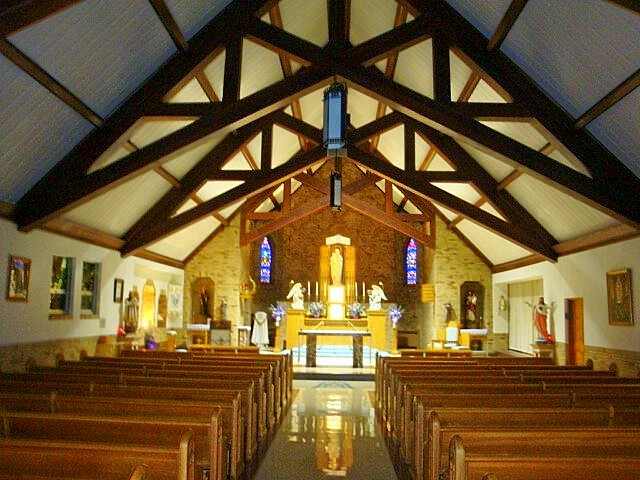 held four times a day in the chapel for those who wish for more than just individual reflection on site. Pilgrims testify to the extraordinary qualities of the site: “’It’s incredible — she’s here, you just feel it’, Ms. Banda said after praying in the crypt chapel, said to be on the spot of the apparitions. As they passed a statue of Mary in white, just as described by Ms. Brise, Ms. Banda was overcome with emotion, weeping and hugging her mother. The two of them went back to pray some more” (Eckholm 2010). Another pilgrim stated that “There’s a lot of power here….You can feel the presence of Mary, and it feels like she’s listening to you” (Eckholm 2010). Many crutches and canes are left behind at the shrine’s crypt. The owners of these items leave them saying that they no longer need their assistance.
held four times a day in the chapel for those who wish for more than just individual reflection on site. Pilgrims testify to the extraordinary qualities of the site: “’It’s incredible — she’s here, you just feel it’, Ms. Banda said after praying in the crypt chapel, said to be on the spot of the apparitions. As they passed a statue of Mary in white, just as described by Ms. Brise, Ms. Banda was overcome with emotion, weeping and hugging her mother. The two of them went back to pray some more” (Eckholm 2010). Another pilgrim stated that “There’s a lot of power here….You can feel the presence of Mary, and it feels like she’s listening to you” (Eckholm 2010). Many crutches and canes are left behind at the shrine’s crypt. The owners of these items leave them saying that they no longer need their assistance.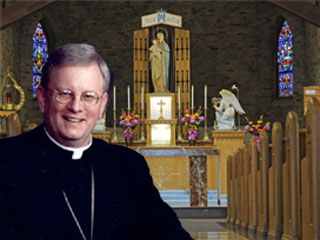 (“Wisconsin Site” 2011). He stated that “I declare with moral certainty and in accord with the norms of the Church that the events, apparitions and locutions given to Adele Brise in October of 1859 do exhibit the substance of supernatural character, and I do hereby approve these apparitions as worthy of belief (although not obligatory) by the Christian faithful” (“Marian Apparitions” 2010).
(“Wisconsin Site” 2011). He stated that “I declare with moral certainty and in accord with the norms of the Church that the events, apparitions and locutions given to Adele Brise in October of 1859 do exhibit the substance of supernatural character, and I do hereby approve these apparitions as worthy of belief (although not obligatory) by the Christian faithful” (“Marian Apparitions” 2010).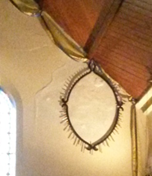 In August 1994, an image of the Virgin Mary, holding the baby Jesus, seemed to appear through plasterwork on a wall at the front of the church to the right of the altar. A parishioner first noticed the image and eventually commented on it to the rector at that time, Father Andrew Notere (originally Nutter), a native of Canada whose father was an Anglican archbishop (Lloyd 1996a:3). There was a waiting period to see if the image remained, and when it did, it was discussed at a church council. The Australian media took up an article that had been prepared for the local diocesan paper by Father Notere (Morgan 2007:32).
In August 1994, an image of the Virgin Mary, holding the baby Jesus, seemed to appear through plasterwork on a wall at the front of the church to the right of the altar. A parishioner first noticed the image and eventually commented on it to the rector at that time, Father Andrew Notere (originally Nutter), a native of Canada whose father was an Anglican archbishop (Lloyd 1996a:3). There was a waiting period to see if the image remained, and when it did, it was discussed at a church council. The Australian media took up an article that had been prepared for the local diocesan paper by Father Notere (Morgan 2007:32).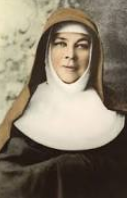 third person, possibly Mary Magdalene or Mary MacKillop was emerging” (Pengelley 1996:3). Saint Mary MacKillop [1842-1909], the first Australian saint [cannonised 2010], was a member of the Josephite order that established a school at Yankalilla.
third person, possibly Mary Magdalene or Mary MacKillop was emerging” (Pengelley 1996:3). Saint Mary MacKillop [1842-1909], the first Australian saint [cannonised 2010], was a member of the Josephite order that established a school at Yankalilla.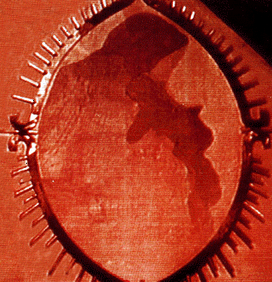 continued to the present day. Many common Marian pilgrimage motifs are present such as miraculous events, healing and messages. This traditional, high Anglican church has accepted the image in its Church despite the general “Protestant view [which] tends to limit the communion of saints to the living and does not look favourably on the possibility of supernatural intervention by deceased saints” (Turner and Turner 1982:145). At the Shrine of Our Lady of Yankalilla visitors have the chance to observe, and to have experiences, that they do not have in their home parishes. Interestingly, the initial rituals at the shrine were drawn from Charismatic, Catholic, Anglican and Buddhist practices (Jones 1998). These rather New Age practices could attract visitors who may not necessarily be drawn to an Anglican church (Cusack 2003:119). McPhillips considers such a mix “in effect releases Mary into new realms of enchantment” (McPhillips 2006:149). It did however cause conflict at a parish level (Jones 1998).
continued to the present day. Many common Marian pilgrimage motifs are present such as miraculous events, healing and messages. This traditional, high Anglican church has accepted the image in its Church despite the general “Protestant view [which] tends to limit the communion of saints to the living and does not look favourably on the possibility of supernatural intervention by deceased saints” (Turner and Turner 1982:145). At the Shrine of Our Lady of Yankalilla visitors have the chance to observe, and to have experiences, that they do not have in their home parishes. Interestingly, the initial rituals at the shrine were drawn from Charismatic, Catholic, Anglican and Buddhist practices (Jones 1998). These rather New Age practices could attract visitors who may not necessarily be drawn to an Anglican church (Cusack 2003:119). McPhillips considers such a mix “in effect releases Mary into new realms of enchantment” (McPhillips 2006:149). It did however cause conflict at a parish level (Jones 1998).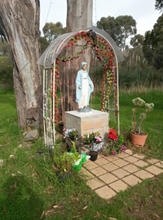 visitors originating from India, most notably from Kerala and Goa, while others are from the South Australian Indian community (Gardiner 2015). The visitors’ book indicates pilgrims are local, interstate as well as from Europe, South America and Asia. These visits may just be curiosity; however, “a tourist is half a pilgrim, if a pilgrim is half a tourist” (Turner 1978;20)
visitors originating from India, most notably from Kerala and Goa, while others are from the South Australian Indian community (Gardiner 2015). The visitors’ book indicates pilgrims are local, interstate as well as from Europe, South America and Asia. These visits may just be curiosity; however, “a tourist is half a pilgrim, if a pilgrim is half a tourist” (Turner 1978;20)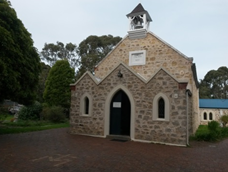 international shrine” (Smart 1996:6 Innes 1996:4). This blessing would appear to indicate that at the time of the emergence of the image there was official Anglican support and acceptance. It is important for miraculous events to fall within the boundaries of the traditional religion with which it is associated. T he Virgin Mary can be found in Anglican shrines, such as at Walsingham [United Kingdom], a site visited by many pilgrims each year, and Christ Church Yankalilla is high Anglican, which accepts veneration of the Virgin Mary (Kahl 1998:257). To link these shrines, an icon dedicated to Walsingham hangs on the Church wall. Such an icon, a pieta (a statue depicting the Virgin Mary cradling the dead body of Jesus) image, may assist visitors in seeing the apparent image on the wall (Morgan 2007:31).
international shrine” (Smart 1996:6 Innes 1996:4). This blessing would appear to indicate that at the time of the emergence of the image there was official Anglican support and acceptance. It is important for miraculous events to fall within the boundaries of the traditional religion with which it is associated. T he Virgin Mary can be found in Anglican shrines, such as at Walsingham [United Kingdom], a site visited by many pilgrims each year, and Christ Church Yankalilla is high Anglican, which accepts veneration of the Virgin Mary (Kahl 1998:257). To link these shrines, an icon dedicated to Walsingham hangs on the Church wall. Such an icon, a pieta (a statue depicting the Virgin Mary cradling the dead body of Jesus) image, may assist visitors in seeing the apparent image on the wall (Morgan 2007:31).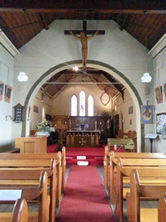 was formed but since disbanded. The aims of the community were to work with pilgrims and foster a healing spirit at the shrine (Kahl 1998:50). A Retreat Centre next to the church was established in 2000, but the space is now utilized for general parish purposes (Morgan 2007:33). A Maori group of singers was reportedly considering moving to the area, drawn by the image. The group joined a local choir to make a CD dedicated to the Virgin Mary appearing at Yankalilla (“Choirs Combine” 2002:14).
was formed but since disbanded. The aims of the community were to work with pilgrims and foster a healing spirit at the shrine (Kahl 1998:50). A Retreat Centre next to the church was established in 2000, but the space is now utilized for general parish purposes (Morgan 2007:33). A Maori group of singers was reportedly considering moving to the area, drawn by the image. The group joined a local choir to make a CD dedicated to the Virgin Mary appearing at Yankalilla (“Choirs Combine” 2002:14).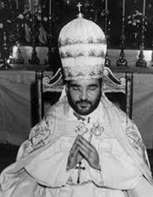 Later, many would look upon him as the seer par excellence, while others would consider him a fake or something in between. After failing to enter priest seminary, he became an office clerk. He worked for a Catholic company in Seville for a time but subsequently was fired. Clemente was not one of the pioneer seers, but beginning in the summer of 1969, and on an almost daily basis, he went to Palmar de Troya together with his friend, the lawyer Manuel Alonso Corral (1934-2011).
Later, many would look upon him as the seer par excellence, while others would consider him a fake or something in between. After failing to enter priest seminary, he became an office clerk. He worked for a Catholic company in Seville for a time but subsequently was fired. Clemente was not one of the pioneer seers, but beginning in the summer of 1969, and on an almost daily basis, he went to Palmar de Troya together with his friend, the lawyer Manuel Alonso Corral (1934-2011).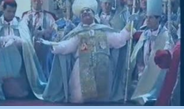 Alonso, written down, copied and distributed. Some of them were translated into English, French and German as part of the diffusion of the news beyond Spain’s borders. To be able to make mission journeys and institutionalize the movement, funding was needed. According to testimonies, Manuel Alonso was a very good fund-raiser who convinced some very wealthy people to contribute large sums. The capital influx meant that Clemente and Manuel could travel widely on both sides of the Atlantic. Beginning in 1971, they went through Western Europe, to the United States and to various countries in Latin America to win people for the Palmarian cause.
Alonso, written down, copied and distributed. Some of them were translated into English, French and German as part of the diffusion of the news beyond Spain’s borders. To be able to make mission journeys and institutionalize the movement, funding was needed. According to testimonies, Manuel Alonso was a very good fund-raiser who convinced some very wealthy people to contribute large sums. The capital influx meant that Clemente and Manuel could travel widely on both sides of the Atlantic. Beginning in 1971, they went through Western Europe, to the United States and to various countries in Latin America to win people for the Palmarian cause.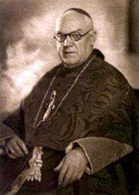 a steady stream of pilgrims kept coming to Palmar de Troya. It was reported that as many as 40,000 people were present on May 15, 1970. Three days after this all-time-high, Bueno published a document, where he briefly commented on the events. He did not mince matters when stating that they were signs of “collective and superstitious hysteria.” The gist of the archbishop Bueno’s statement on Palmar de Troya was reiterated in 1972. In a decree, he explicitly forbade all kinds of public worship at the Alcaparrosa field, ordering Roman Catholic priests not to be present, let alone celebrate any religious services there.
a steady stream of pilgrims kept coming to Palmar de Troya. It was reported that as many as 40,000 people were present on May 15, 1970. Three days after this all-time-high, Bueno published a document, where he briefly commented on the events. He did not mince matters when stating that they were signs of “collective and superstitious hysteria.” The gist of the archbishop Bueno’s statement on Palmar de Troya was reiterated in 1972. In a decree, he explicitly forbade all kinds of public worship at the Alcaparrosa field, ordering Roman Catholic priests not to be present, let alone celebrate any religious services there.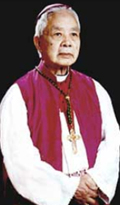 bishop in 1938 and became archbishop of Hue in 1960. While living in Europe, he was replaced in Hue and instead made titular archbishop of Bulla Regia. However, he actually served as an assistant pastor in a small Italian town, upset and bewildered by the changes in the post-conciliar church. Archbishop Thuc came to Palmar de Troya through the mediation of Maurice Revaz, who taught canon law at the traditionalist Society of Pius X’s seminary in Ecône. Revaz convinced Thuc that he was elected by the Virgin to save the Catholic Church from perdition. With short notice, the Vietnamese prelate therefore travelled to Seville and Palmar de Troya. On New Year’s night in 1976, he ordained Clemente Dominguez, Manuel Alonso, and two other men to the priesthood. The priestly ordinations, however, were just the prelude. Less than two weeks later, on January 11, 1976, Thuc consecrated five of the Palmarians, once again including Clemente and Manuel. With the episcopal consecrations, the Palmarians had secured their much sought-after apostolic succession and could start making bishops of their own.
bishop in 1938 and became archbishop of Hue in 1960. While living in Europe, he was replaced in Hue and instead made titular archbishop of Bulla Regia. However, he actually served as an assistant pastor in a small Italian town, upset and bewildered by the changes in the post-conciliar church. Archbishop Thuc came to Palmar de Troya through the mediation of Maurice Revaz, who taught canon law at the traditionalist Society of Pius X’s seminary in Ecône. Revaz convinced Thuc that he was elected by the Virgin to save the Catholic Church from perdition. With short notice, the Vietnamese prelate therefore travelled to Seville and Palmar de Troya. On New Year’s night in 1976, he ordained Clemente Dominguez, Manuel Alonso, and two other men to the priesthood. The priestly ordinations, however, were just the prelude. Less than two weeks later, on January 11, 1976, Thuc consecrated five of the Palmarians, once again including Clemente and Manuel. With the episcopal consecrations, the Palmarians had secured their much sought-after apostolic succession and could start making bishops of their own.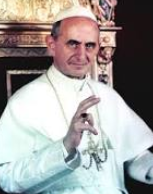 demise of Paul VI, Clemente claimed to have become pope by direct divine intervention, taking the name Gregory XVII. Having returned to Seville, on August 9, he proclaimed that the Holy See had moved from Rome to Palmar de Troya. The Roman era of the church was over and the Holy Catholic Apostolic Palmarian Church was established.
demise of Paul VI, Clemente claimed to have become pope by direct divine intervention, taking the name Gregory XVII. Having returned to Seville, on August 9, he proclaimed that the Holy See had moved from Rome to Palmar de Troya. The Roman era of the church was over and the Holy Catholic Apostolic Palmarian Church was established.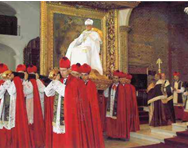 was no conclave as he had already named Father Isidoro María (Manuel Alonso) his successor. The latter was crowned on March 24, taking Peter II as his papal name. In his first apostolic letters, the new pope defended his position as the true successor of Gregory XVII the Very Great, who was immediately canonized. Peter II never claimed to receive any private apparitions and mainly looked upon himself as the defender of the Palmarian teachings.
was no conclave as he had already named Father Isidoro María (Manuel Alonso) his successor. The latter was crowned on March 24, taking Peter II as his papal name. In his first apostolic letters, the new pope defended his position as the true successor of Gregory XVII the Very Great, who was immediately canonized. Peter II never claimed to receive any private apparitions and mainly looked upon himself as the defender of the Palmarian teachings.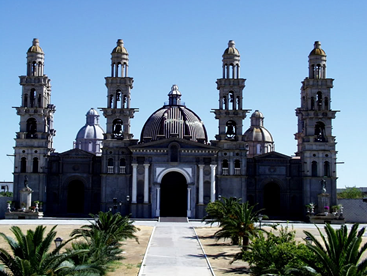 rather small organization. During the 1970s, 1980s and to some extent into the 1990s, the Palmarian church was very wealthy due to substantial, more or less voluntary, donations from members and benefactors. People paid part of their salary to the church, and it became the beneficiary in last wills and testaments. With the money, the leaders acquired about ten buildings in the city- center of Seville, which served as headquarters and convents. They also were able to build the enormous church at the apparition site, the Cathedral-Basilica of Our Crowned Virgin of El Palmar, which is one of the largest temples constructed in twentieth-century Spain. Together the sumptuous religious paraphernalia kept within the Basilica, its cost is at least 100,000,000 Euros, and probably much more. Due to decreasing incomes in the late 1990s, the Palmarians sold their remaining buildings in Seville in 2003. At that time, the clergy left for Palmar de Troya, where the order had bought some twenty houses in the 1970s. New buildings were constructed on the cathedral compound. Palmar de Troya thus became the residential center of the church, not only the spiritual.
rather small organization. During the 1970s, 1980s and to some extent into the 1990s, the Palmarian church was very wealthy due to substantial, more or less voluntary, donations from members and benefactors. People paid part of their salary to the church, and it became the beneficiary in last wills and testaments. With the money, the leaders acquired about ten buildings in the city- center of Seville, which served as headquarters and convents. They also were able to build the enormous church at the apparition site, the Cathedral-Basilica of Our Crowned Virgin of El Palmar, which is one of the largest temples constructed in twentieth-century Spain. Together the sumptuous religious paraphernalia kept within the Basilica, its cost is at least 100,000,000 Euros, and probably much more. Due to decreasing incomes in the late 1990s, the Palmarians sold their remaining buildings in Seville in 2003. At that time, the clergy left for Palmar de Troya, where the order had bought some twenty houses in the 1970s. New buildings were constructed on the cathedral compound. Palmar de Troya thus became the residential center of the church, not only the spiritual.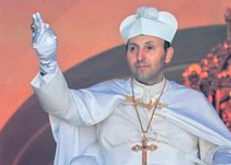 crowned on July 17, taking the name Gregory XVIII. Shortly after the coronation, the new pope convened a new Palmarian Council to begin in January 2012. During the pontificate of Gregory XVIII , the Palmarian economy seems to have improved considerably. After a decade-long long standstill, the work on the cathedral speeded up, and by 2014, the construction work that began in 1978 was finished.
crowned on July 17, taking the name Gregory XVIII. Shortly after the coronation, the new pope convened a new Palmarian Council to begin in January 2012. During the pontificate of Gregory XVIII , the Palmarian economy seems to have improved considerably. After a decade-long long standstill, the work on the cathedral speeded up, and by 2014, the construction work that began in 1978 was finished.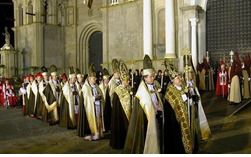 conversion. This drop can be strengthened, diminished or disappear altogether according to the moral status of the individual. The sacraments also “enthrone” and strengthen a piece of Christ’s heart in the faithful.
conversion. This drop can be strengthened, diminished or disappear altogether according to the moral status of the individual. The sacraments also “enthrone” and strengthen a piece of Christ’s heart in the faithful.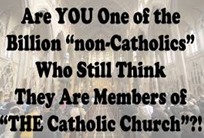 group. Following the promulgation of the 1980 Spanish law on religious freedom, in 1981 and several times later, the Palmarians applied for inscription into the official Spanish register of religious associations. However, they were repeatedly denied inscription by the Ministry of Justice, among other reasons because the term “Catholic” was controlled by the Roman Catholic Church. In later applications, they therefore introduced a new official name, Iglesia Cristiana Palmariana de los Carmelitas de la Santa Faz. In the official context, then, the church did not use the label “Catholic” but rather “Christian”.
group. Following the promulgation of the 1980 Spanish law on religious freedom, in 1981 and several times later, the Palmarians applied for inscription into the official Spanish register of religious associations. However, they were repeatedly denied inscription by the Ministry of Justice, among other reasons because the term “Catholic” was controlled by the Roman Catholic Church. In later applications, they therefore introduced a new official name, Iglesia Cristiana Palmariana de los Carmelitas de la Santa Faz. In the official context, then, the church did not use the label “Catholic” but rather “Christian”.
 affiliate with the Disciples of Christ (Christian Church), and in 1960 the Peoples Temple Christian Church Full Gospel [Image at right] became an official member of the denomination (Moore 2009:13).
affiliate with the Disciples of Christ (Christian Church), and in 1960 the Peoples Temple Christian Church Full Gospel [Image at right] became an official member of the denomination (Moore 2009:13). Venezuelan border. By the time the Temple signed an official lease for the land in 1976, pioneers from the group had already spent two years of back-breaking labor [Image at right] to clear jungle in Guyana in order to establish what they called the Peoples Temple Agricultural Project. Guyana, a multiracial state and the only English-speaking country in South America, declared itself to be a cooperative socialist republic. Its black minority government welcomed the prospect of serving as a refuge for Americans fleeing a racist and oppressive society. Moreover, having a large group of ex-patriate Americans so close to the border with Venezuela assured U.S. interest in the area under dispute (Moore 2009:42). The Peoples Temple Agricultural Project grew slowly at first, housing only about 50 people as late as the first months of 1977, but it expanded to more than 400 residents by April, and to 1,000 by the end of the year (Moore 2009:44).
Venezuelan border. By the time the Temple signed an official lease for the land in 1976, pioneers from the group had already spent two years of back-breaking labor [Image at right] to clear jungle in Guyana in order to establish what they called the Peoples Temple Agricultural Project. Guyana, a multiracial state and the only English-speaking country in South America, declared itself to be a cooperative socialist republic. Its black minority government welcomed the prospect of serving as a refuge for Americans fleeing a racist and oppressive society. Moreover, having a large group of ex-patriate Americans so close to the border with Venezuela assured U.S. interest in the area under dispute (Moore 2009:42). The Peoples Temple Agricultural Project grew slowly at first, housing only about 50 people as late as the first months of 1977, but it expanded to more than 400 residents by April, and to 1,000 by the end of the year (Moore 2009:44).

 Congressman Leo J. Ryan. [Image at right] A constituent, Sammy Houston, claimed that his son Robert had been murdered by Temple members. (There is no evidence to substantiate his claim, which was investigated by the police at the time of Robert’s death, and was re-examined after events in Jonestown.)
Congressman Leo J. Ryan. [Image at right] A constituent, Sammy Houston, claimed that his son Robert had been murdered by Temple members. (There is no evidence to substantiate his claim, which was investigated by the police at the time of Robert’s death, and was re-examined after events in Jonestown.) her three children and herself in the bathroom of the Georgetown headquarters. The final death toll in Guyana that day was 918: 909 in Jonestown; five at the Port Kaituma airstrip, and four at the Temple’s house in Georgetown. [Image at right]
her three children and herself in the bathroom of the Georgetown headquarters. The final death toll in Guyana that day was 918: 909 in Jonestown; five at the Port Kaituma airstrip, and four at the Temple’s house in Georgetown. [Image at right] the bodies in Jonestown. A U.S. Army Graves Registration team bagged the remains, which the U.S. Air Force then transported to Dover Air Force Base for identification by the Federal Bureau of Investigation. [Image at right] (Interviews with participants in the bodylift are available at “Military Response to Jonestown” 2020). Routine embalming of all bodies began almost immediately, but one result was that vital forensic evidence was destroyed, which prevented accurate determination of death for seven individuals autopsied by the Armed Forces Institute of Pathology. Relatives claimed approximately one half of the number of bodies, while about 400 bodies remained unidentified or unclaimed. The majority of the unidentified were children. An interfaith group in San Francisco found a cemetery in Oakland, California willing to bury these bodies, after facing rejection by a number of other cemeteries afraid of criticism. In May, 2011 four memorial plaques were placed at the burial site in Evergreen Cemetery, listing the names of all those who died on November 18, 1978.
the bodies in Jonestown. A U.S. Army Graves Registration team bagged the remains, which the U.S. Air Force then transported to Dover Air Force Base for identification by the Federal Bureau of Investigation. [Image at right] (Interviews with participants in the bodylift are available at “Military Response to Jonestown” 2020). Routine embalming of all bodies began almost immediately, but one result was that vital forensic evidence was destroyed, which prevented accurate determination of death for seven individuals autopsied by the Armed Forces Institute of Pathology. Relatives claimed approximately one half of the number of bodies, while about 400 bodies remained unidentified or unclaimed. The majority of the unidentified were children. An interfaith group in San Francisco found a cemetery in Oakland, California willing to bury these bodies, after facing rejection by a number of other cemeteries afraid of criticism. In May, 2011 four memorial plaques were placed at the burial site in Evergreen Cemetery, listing the names of all those who died on November 18, 1978. traditional Christianity did not exist, but a genuine God, referred to as Principle or Divine Socialism, did exist in the person of Jim Jones. [Image at right] If God is Love, and Love is Socialism, then humans must live socialistically to participate in God. Moreover, this allowed for personal deification, as Jones quoted John 10:34: “ye all are gods” (Chidester 1988:53). Thus, members of Peoples Temple practiced what they called “apostolic socialism,” that is, the socialism of the early Christian community described in Acts 2:45 and 4:34-35. “No one can privately own the land. No one can privately own the air. It must be held in common. So then, that is love, that is God, Socialism” (Chidester 1988:57, quoting Jones on Tape Q 967).
traditional Christianity did not exist, but a genuine God, referred to as Principle or Divine Socialism, did exist in the person of Jim Jones. [Image at right] If God is Love, and Love is Socialism, then humans must live socialistically to participate in God. Moreover, this allowed for personal deification, as Jones quoted John 10:34: “ye all are gods” (Chidester 1988:53). Thus, members of Peoples Temple practiced what they called “apostolic socialism,” that is, the socialism of the early Christian community described in Acts 2:45 and 4:34-35. “No one can privately own the land. No one can privately own the air. It must be held in common. So then, that is love, that is God, Socialism” (Chidester 1988:57, quoting Jones on Tape Q 967). “corrective fellowship” meetings were held in which church members offered self-criticism. But catharsis as a regular part of Temple practice took root in Redwood Valley. [Image at right] Catharsis sessions required public confession and communal punishment for transgressions against the community and its members (Moore 2009:32-33). For example, if a teenager was accused of being rude to a senior citizen, the congregation would hear the evidence and vote on the teenager’s innocence or guilt, and on the punishment to be received. The penalty could be a severe spanking administered by one of the seniors. When Jones introduced the “Board of Education,” a one-by-four inch board two and a half feet long, he assigned a large woman to administer the beatings: “She was strong and knew how to whip hard,” according to Mills (1979). Adults who transgressed were punished by being forced to box with other Temple members. A diary kept by Temple member Edith Roller, for example, reported a boxing match between a young man accused of sexism, and a young woman. The woman knocked out the man, to the delight of the crowd in attendance (Moore 2009:32-33).
“corrective fellowship” meetings were held in which church members offered self-criticism. But catharsis as a regular part of Temple practice took root in Redwood Valley. [Image at right] Catharsis sessions required public confession and communal punishment for transgressions against the community and its members (Moore 2009:32-33). For example, if a teenager was accused of being rude to a senior citizen, the congregation would hear the evidence and vote on the teenager’s innocence or guilt, and on the punishment to be received. The penalty could be a severe spanking administered by one of the seniors. When Jones introduced the “Board of Education,” a one-by-four inch board two and a half feet long, he assigned a large woman to administer the beatings: “She was strong and knew how to whip hard,” according to Mills (1979). Adults who transgressed were punished by being forced to box with other Temple members. A diary kept by Temple member Edith Roller, for example, reported a boxing match between a young man accused of sexism, and a young woman. The woman knocked out the man, to the delight of the crowd in attendance (Moore 2009:32-33). Violations,” that incoming and outgoing mail was censored; that travel was restricted; that family members could not visit relatives in Jonestown; and that residents put their best face forward for visitors. [Image at right] Situated in the middle of dense jungle, with only two villages accessible by road (Port Kaituma six miles away and Matthews Ridge 30 miles distant) and connected only by air or river travel to the rest of the world, Jonestown was an encapsulated community, almost completely isolated from contact with outsiders. At the same time, Jonestown did not acquire its totalistic profile apart from the agitation of its “cultural opponents” (Hall 1995). As Hall observes, anticult activists played a role in the outcomes in Jonestown and at Mt. Carmel. In their article that analyzes the endogenous (internal) factors leading to violence in new religious movements and the exogenous (external) factors, Anthony, Robbins, and Barrie-Anthony (2011) describe a “toxic interdependence” of “anticult and cult violence,” and suggest that “some groups may be so highly totalistic that they are very vulnerable to [a] triggering effect,” that is, acting out totalistic projections from the outside world (2011:82). In other words, conditions in Jonestown may have declined in response to the level of threat residents believed to exist.
Violations,” that incoming and outgoing mail was censored; that travel was restricted; that family members could not visit relatives in Jonestown; and that residents put their best face forward for visitors. [Image at right] Situated in the middle of dense jungle, with only two villages accessible by road (Port Kaituma six miles away and Matthews Ridge 30 miles distant) and connected only by air or river travel to the rest of the world, Jonestown was an encapsulated community, almost completely isolated from contact with outsiders. At the same time, Jonestown did not acquire its totalistic profile apart from the agitation of its “cultural opponents” (Hall 1995). As Hall observes, anticult activists played a role in the outcomes in Jonestown and at Mt. Carmel. In their article that analyzes the endogenous (internal) factors leading to violence in new religious movements and the exogenous (external) factors, Anthony, Robbins, and Barrie-Anthony (2011) describe a “toxic interdependence” of “anticult and cult violence,” and suggest that “some groups may be so highly totalistic that they are very vulnerable to [a] triggering effect,” that is, acting out totalistic projections from the outside world (2011:82). In other words, conditions in Jonestown may have declined in response to the level of threat residents believed to exist. whose mother, aunt, and cousins died in Jonestown, has conducted a memorial service at Evergreen Cemetery in Oakland, California [Image at right] every November 18 since 1979. Norwood raised money to construct a memorial on the site, and in 2008 unveiled two enormous granite blocks with the names of some, but not all, adults who had died in Jonestown. According to Ron Haulman, manager of the cemetery, however, the fragile hillside could not support the size or weight of the monuments (Haulman 2011). In 2010, frustrated with the slow pace of the memorialization process, three relatives of Jonestown victims (Jim Jones Jr., John Cobb, and Fielding McGehee) created the Jonestown Memorial Fund and signed a contract with Evergreen Cemetery, agreeing to create a monument consistent with environmental constraints at the hillside (McGehee 2011). In 2011 the three raised $20,000 in three weeks from 120 former Temple members, relatives, scholars, and others. In May 2011, Norwood sued to halt installation of the memorial, claiming that she had a prior claim with the cemetery. The court ruled against her, given that by the time of her suit, the new memorial (four granite plaques that list the names of all who died) was already in place.
whose mother, aunt, and cousins died in Jonestown, has conducted a memorial service at Evergreen Cemetery in Oakland, California [Image at right] every November 18 since 1979. Norwood raised money to construct a memorial on the site, and in 2008 unveiled two enormous granite blocks with the names of some, but not all, adults who had died in Jonestown. According to Ron Haulman, manager of the cemetery, however, the fragile hillside could not support the size or weight of the monuments (Haulman 2011). In 2010, frustrated with the slow pace of the memorialization process, three relatives of Jonestown victims (Jim Jones Jr., John Cobb, and Fielding McGehee) created the Jonestown Memorial Fund and signed a contract with Evergreen Cemetery, agreeing to create a monument consistent with environmental constraints at the hillside (McGehee 2011). In 2011 the three raised $20,000 in three weeks from 120 former Temple members, relatives, scholars, and others. In May 2011, Norwood sued to halt installation of the memorial, claiming that she had a prior claim with the cemetery. The court ruled against her, given that by the time of her suit, the new memorial (four granite plaques that list the names of all who died) was already in place.